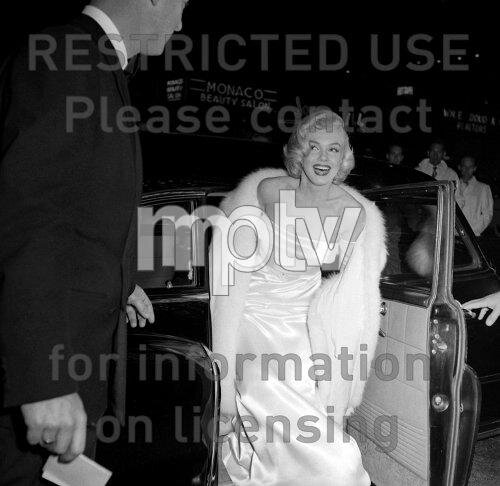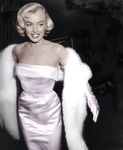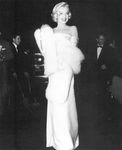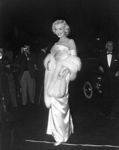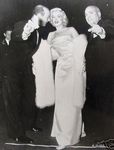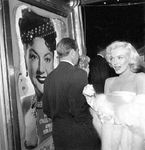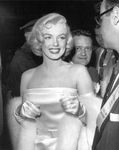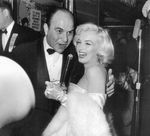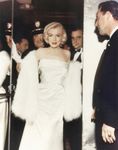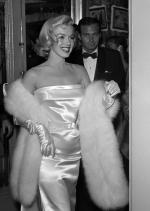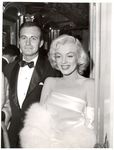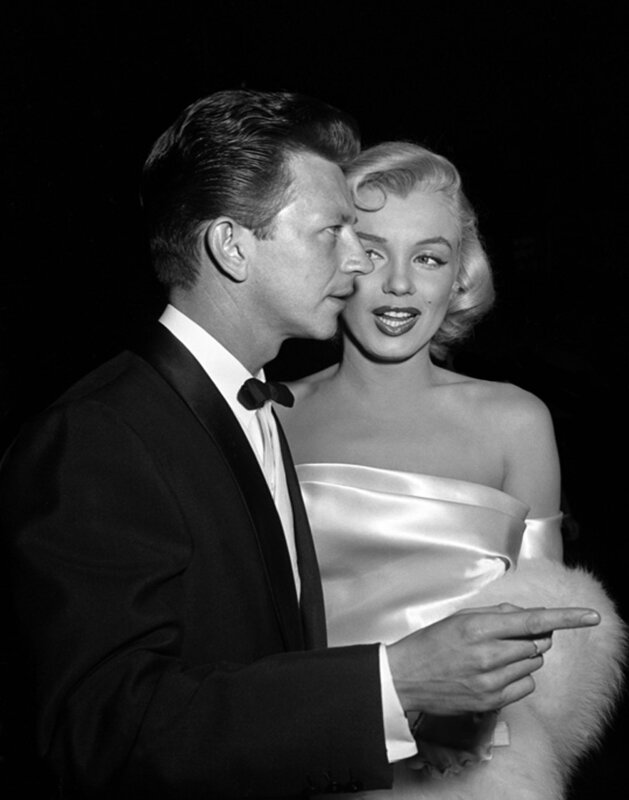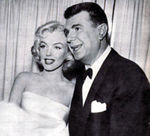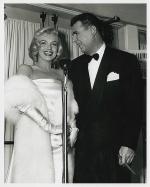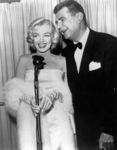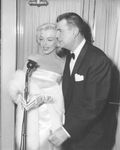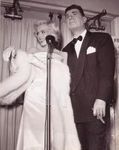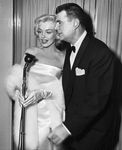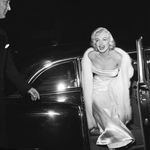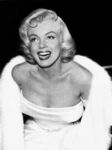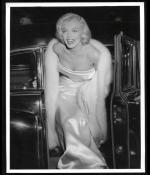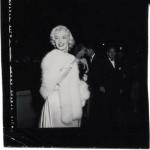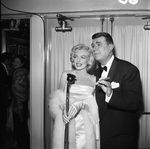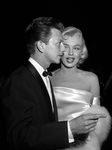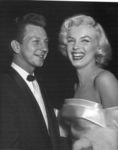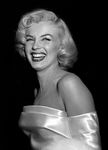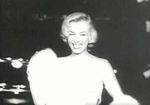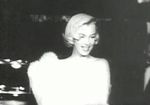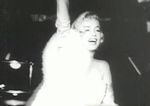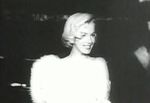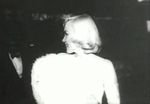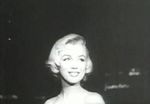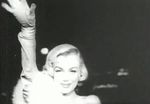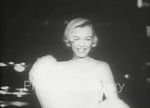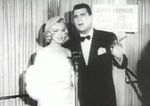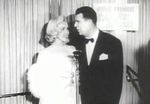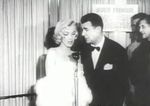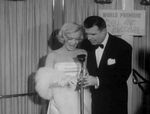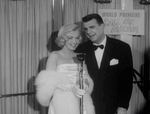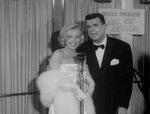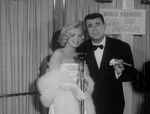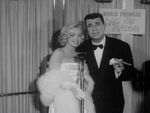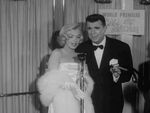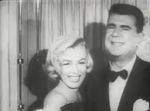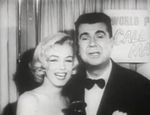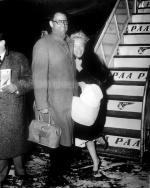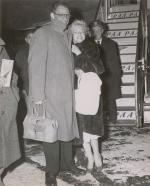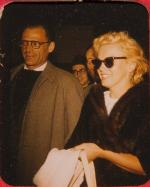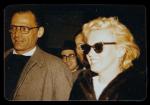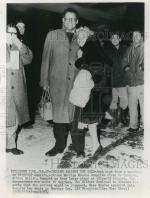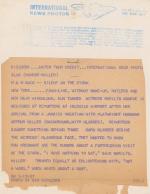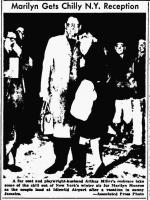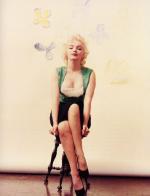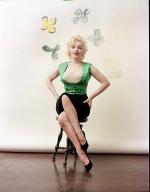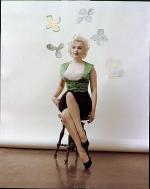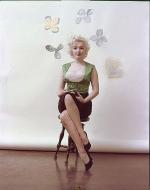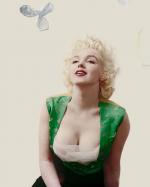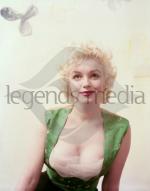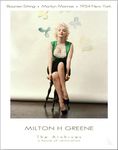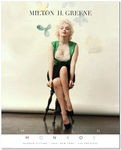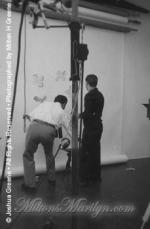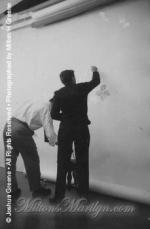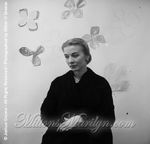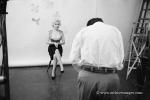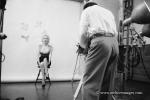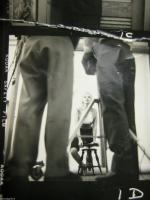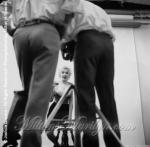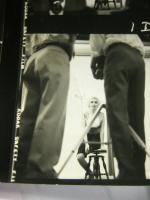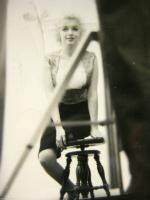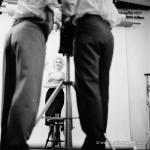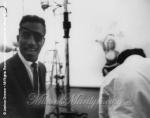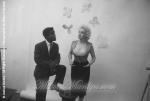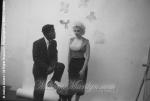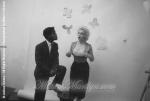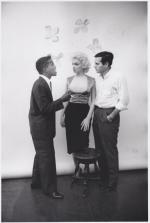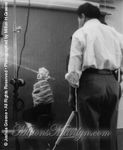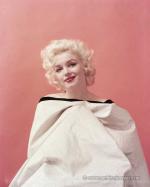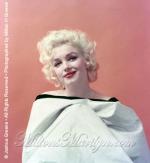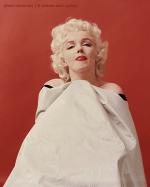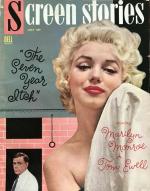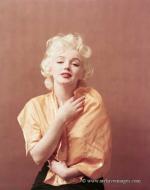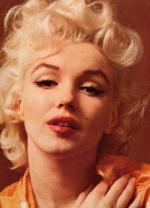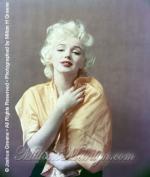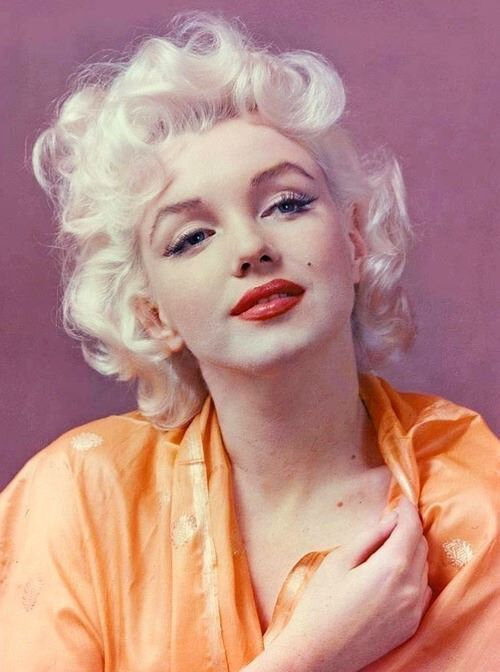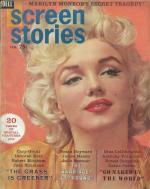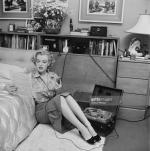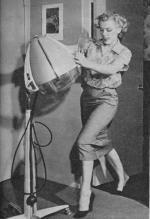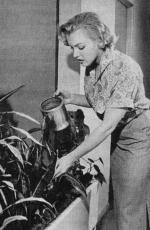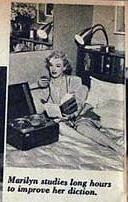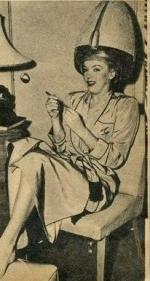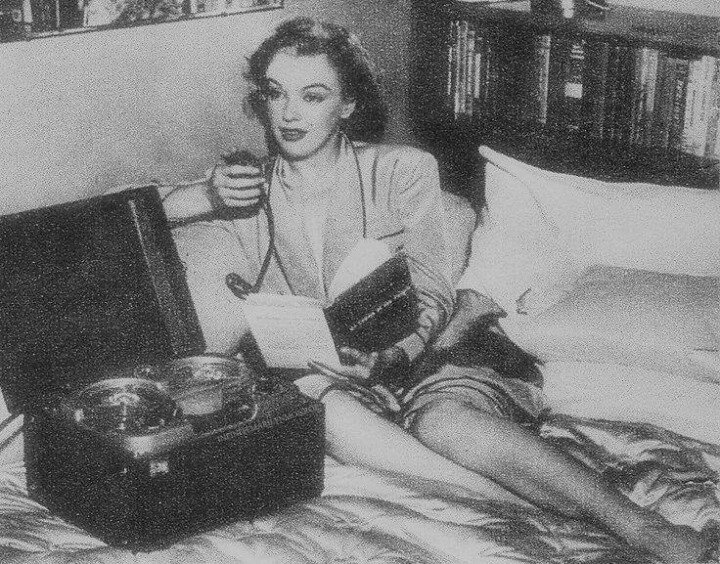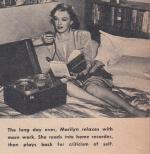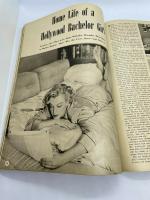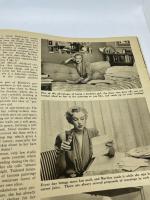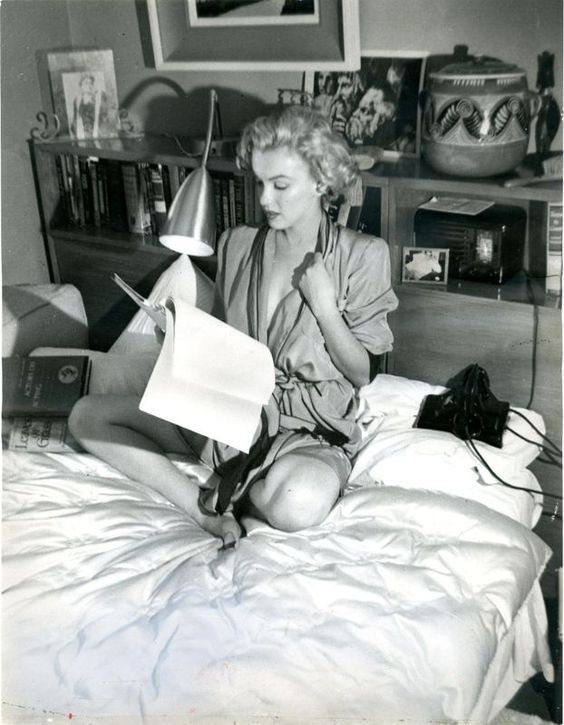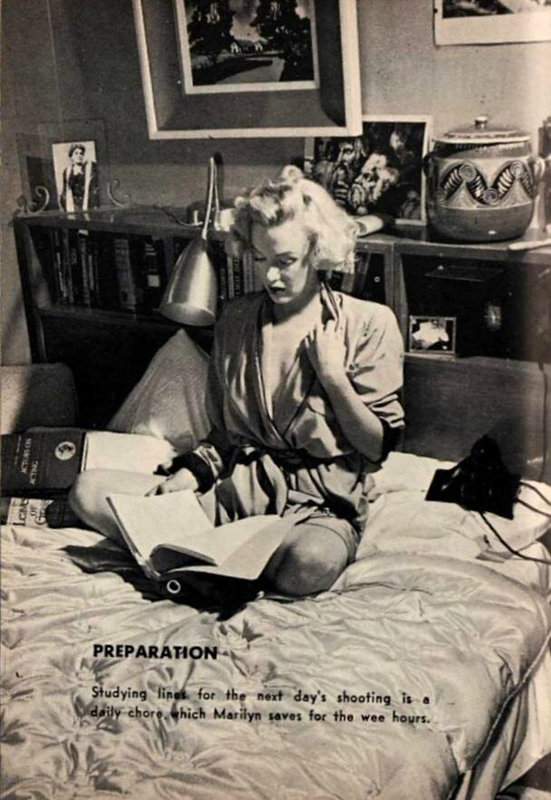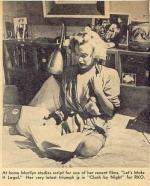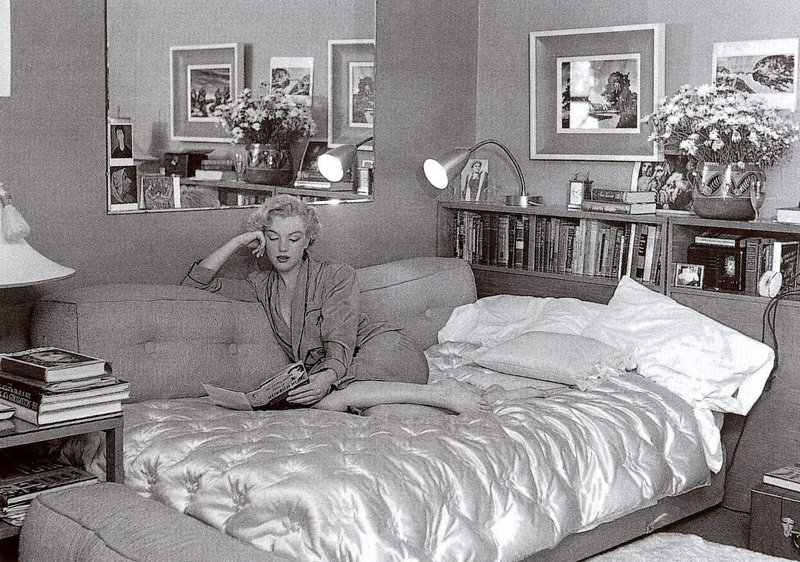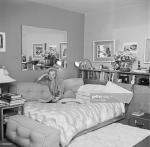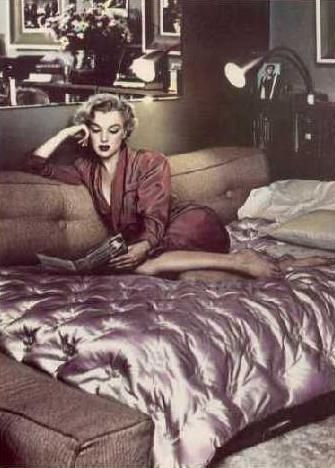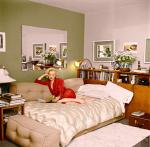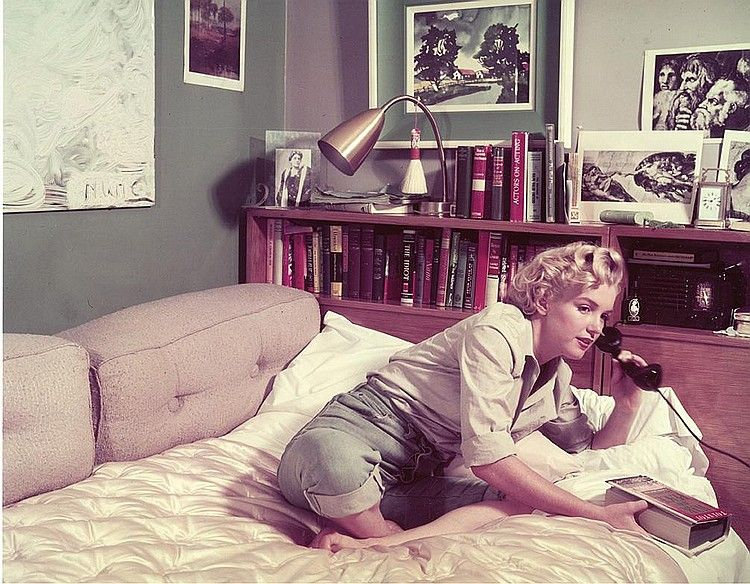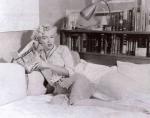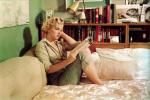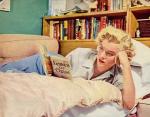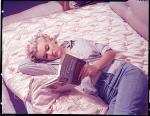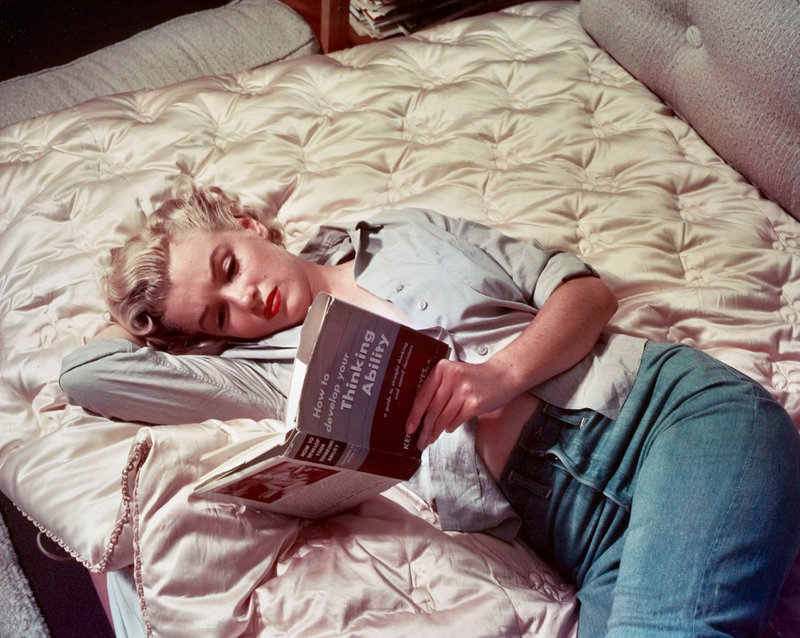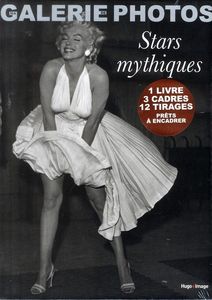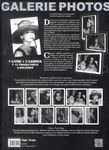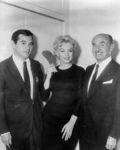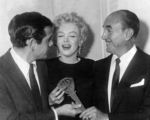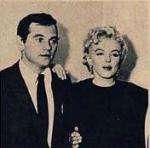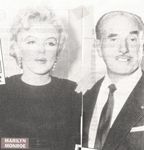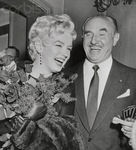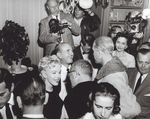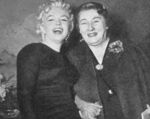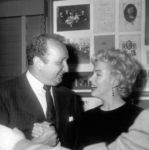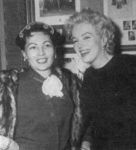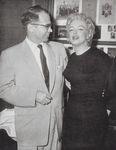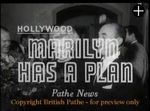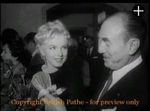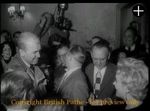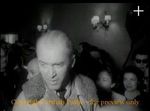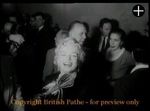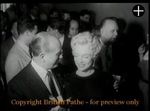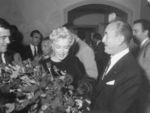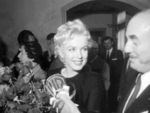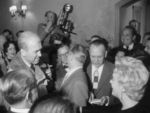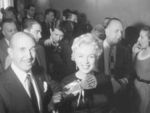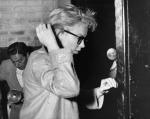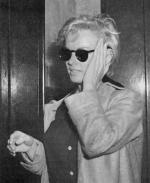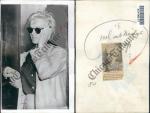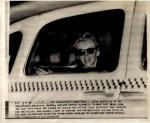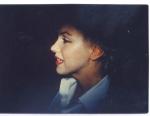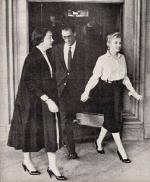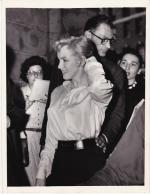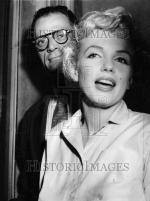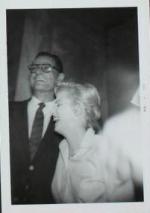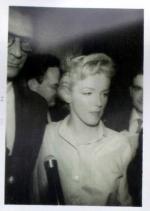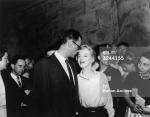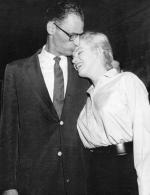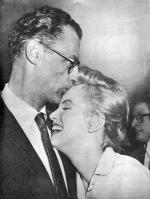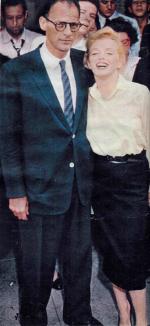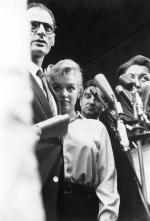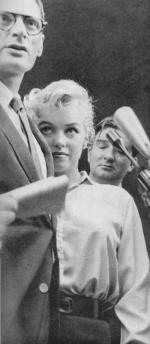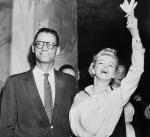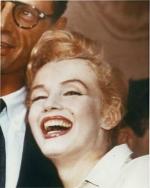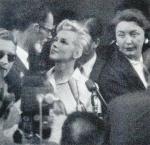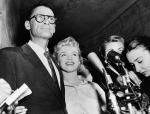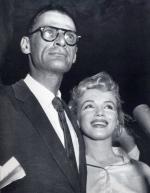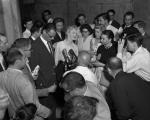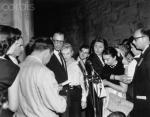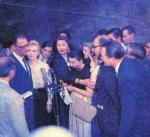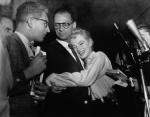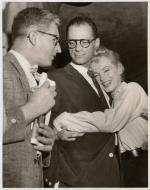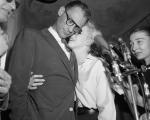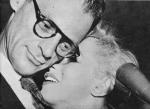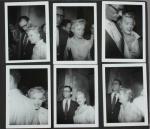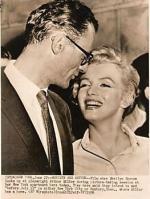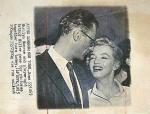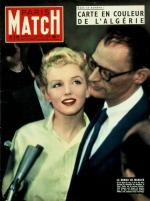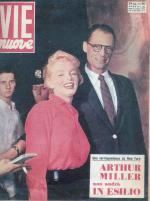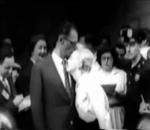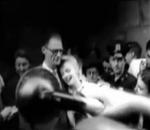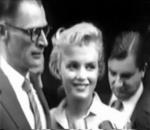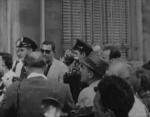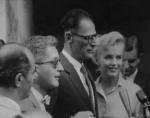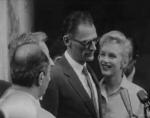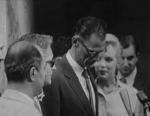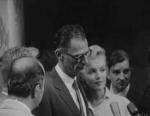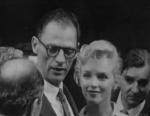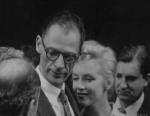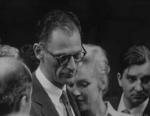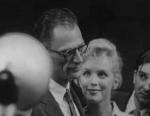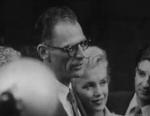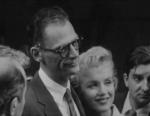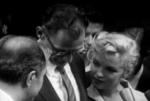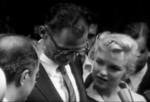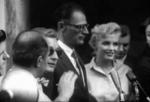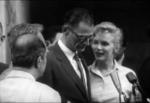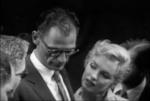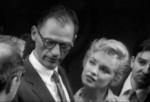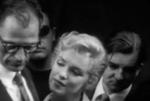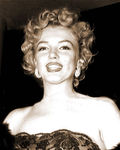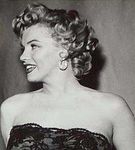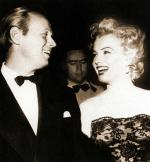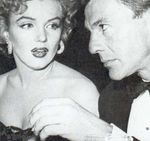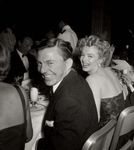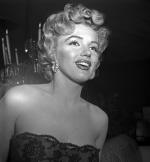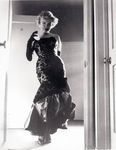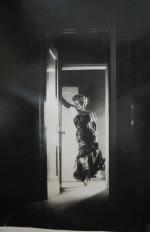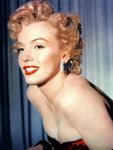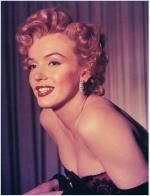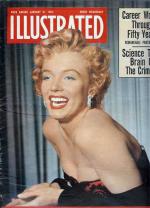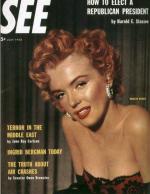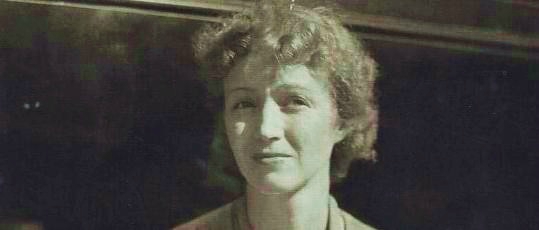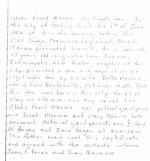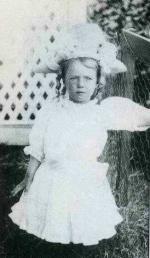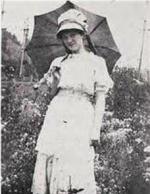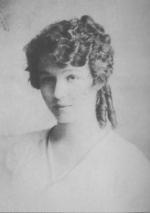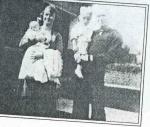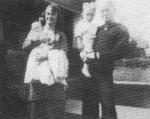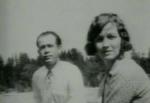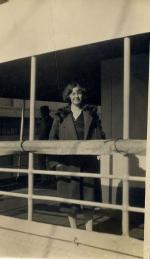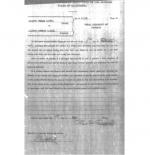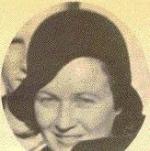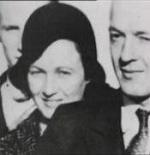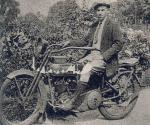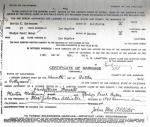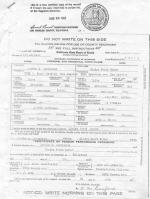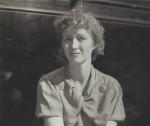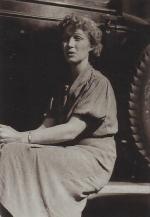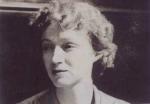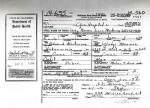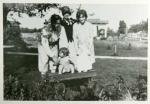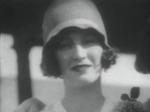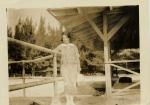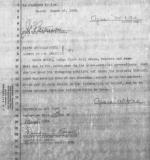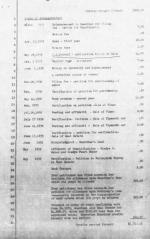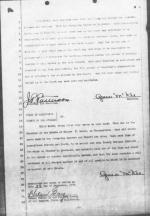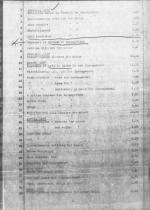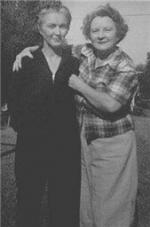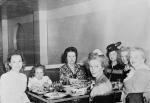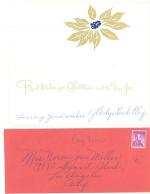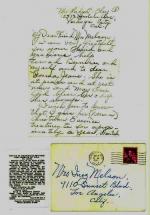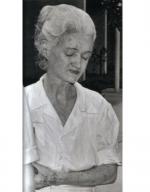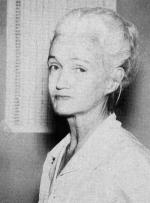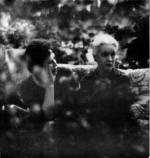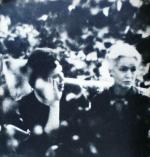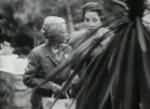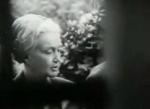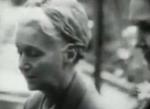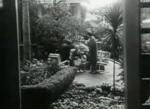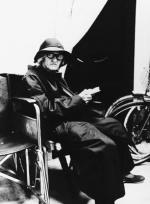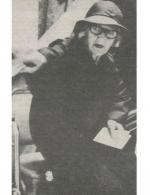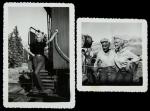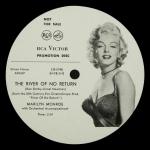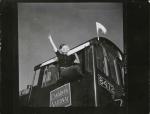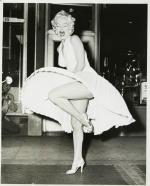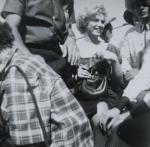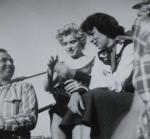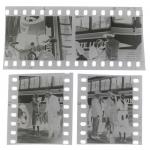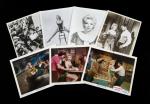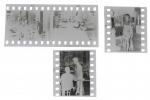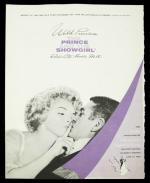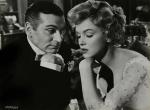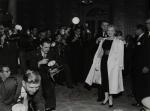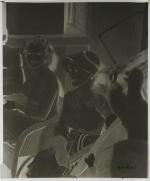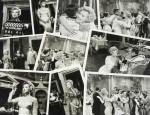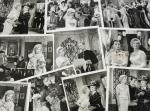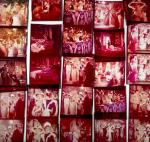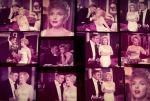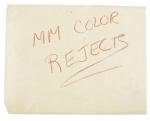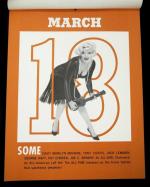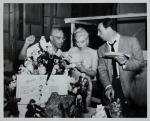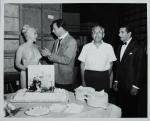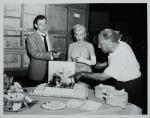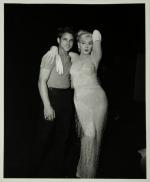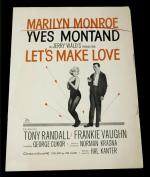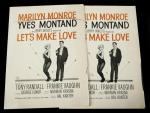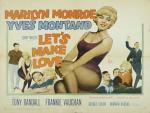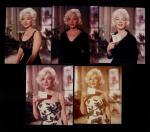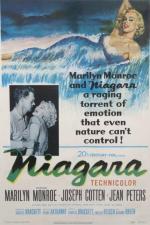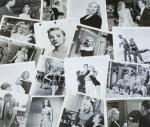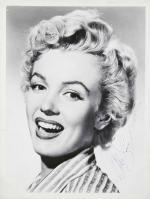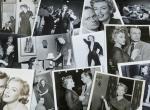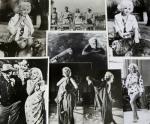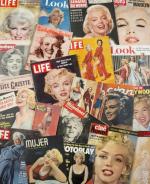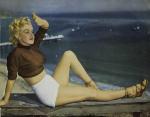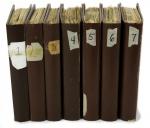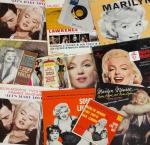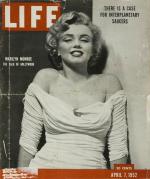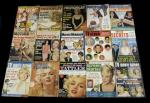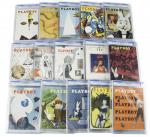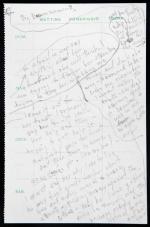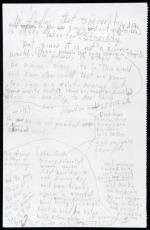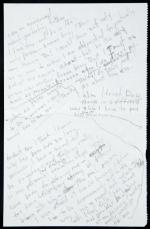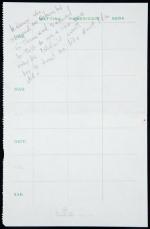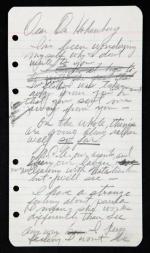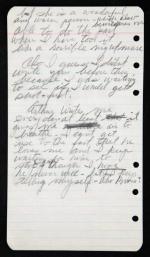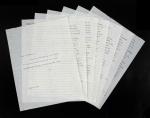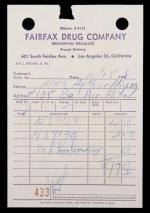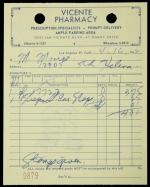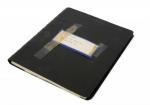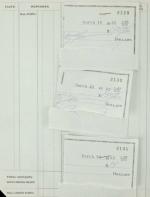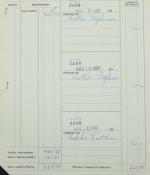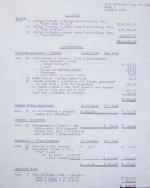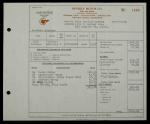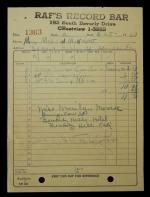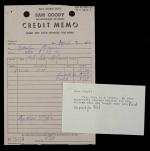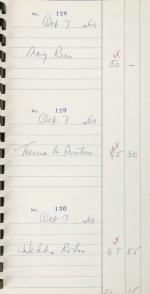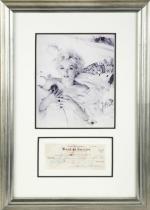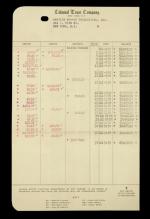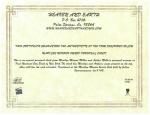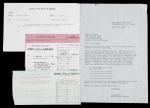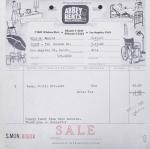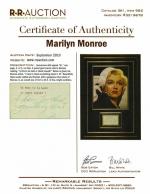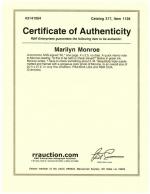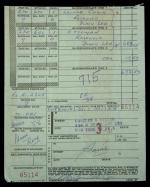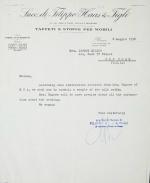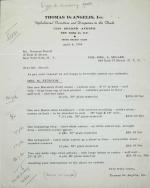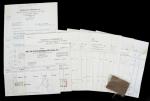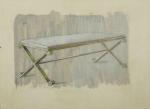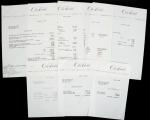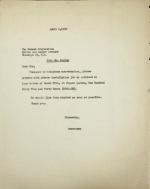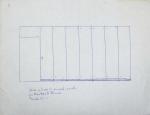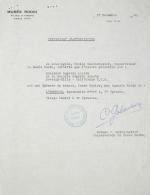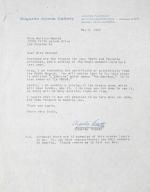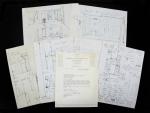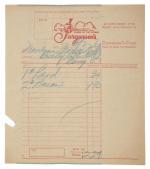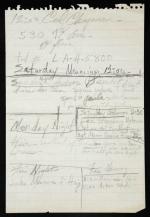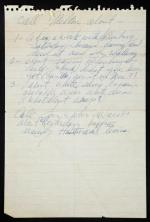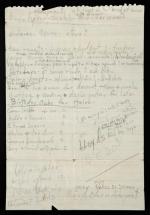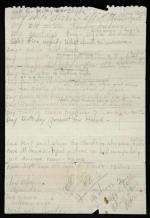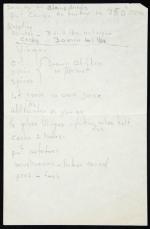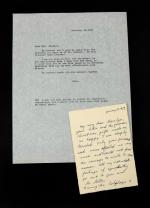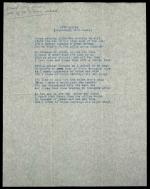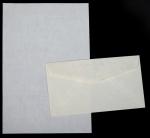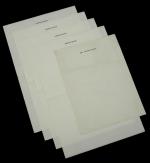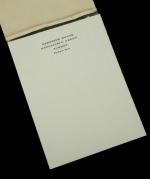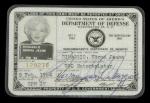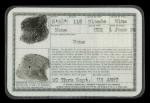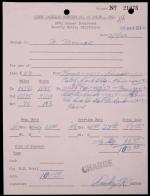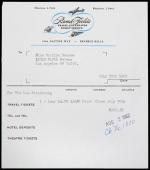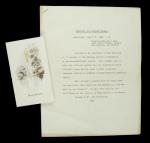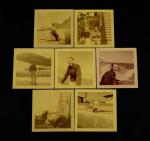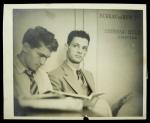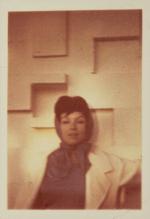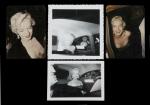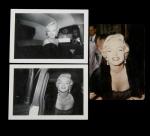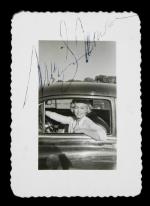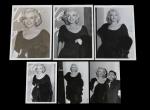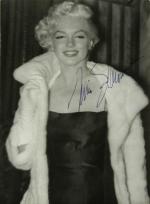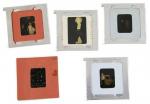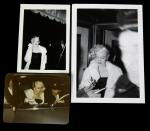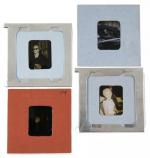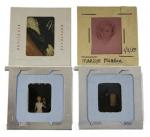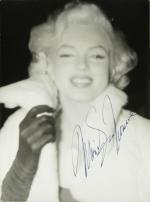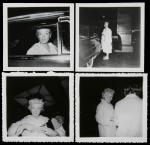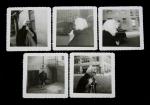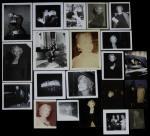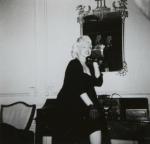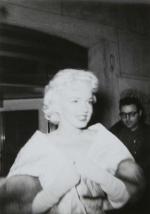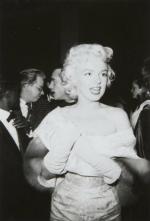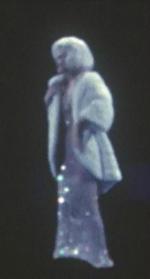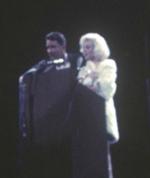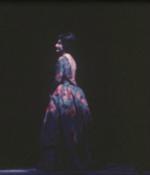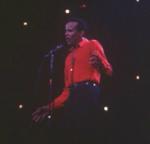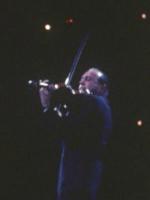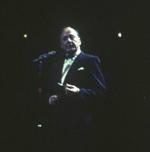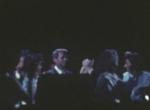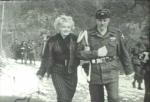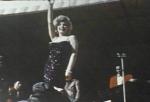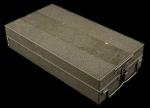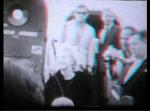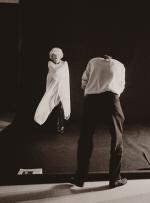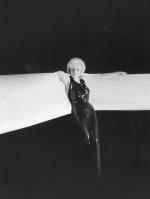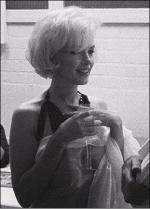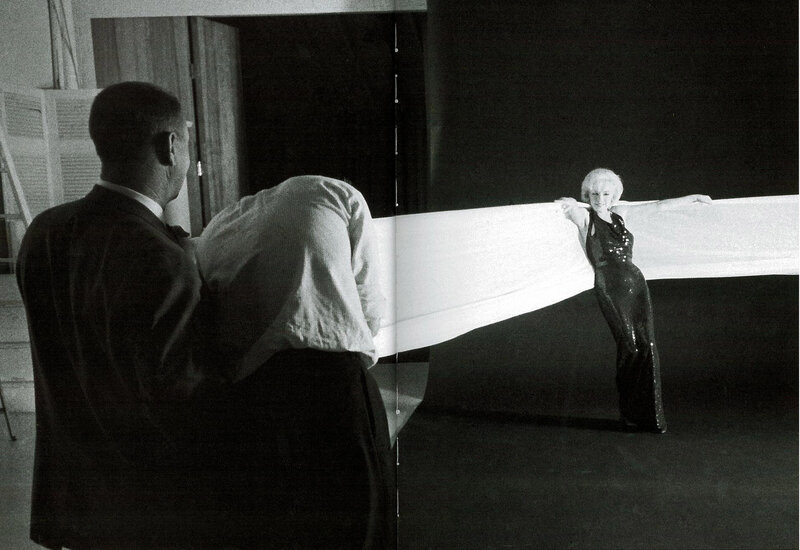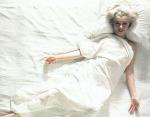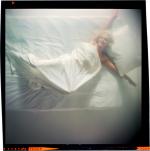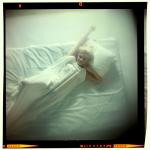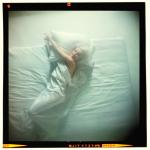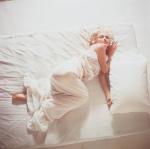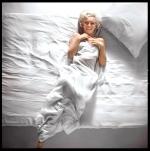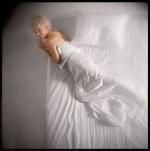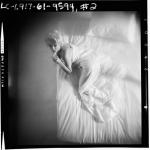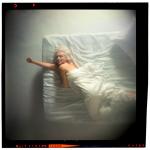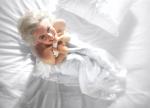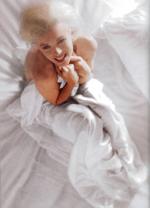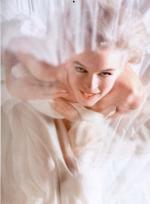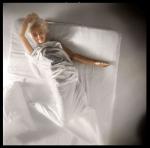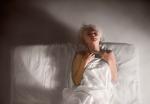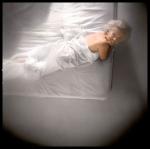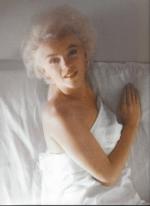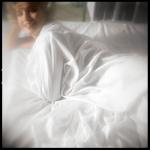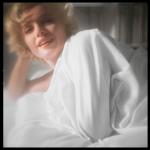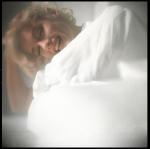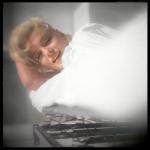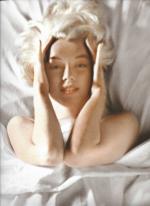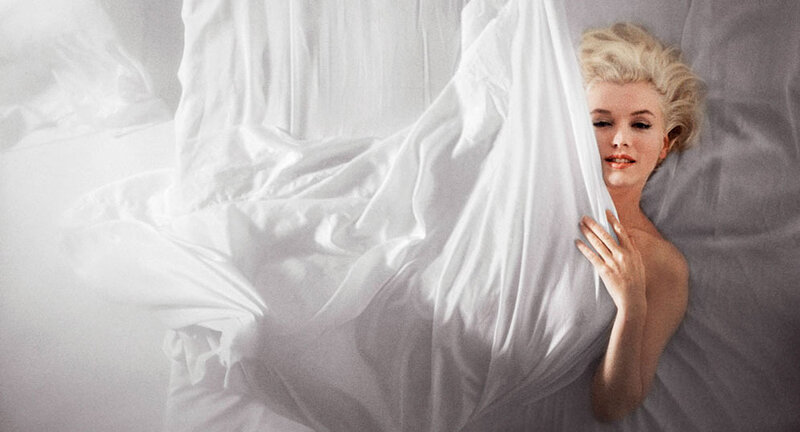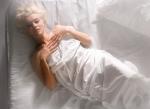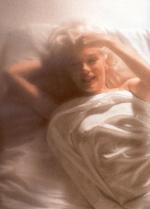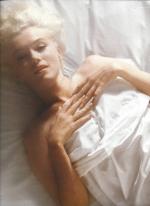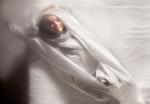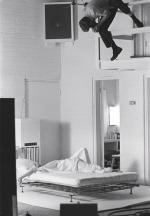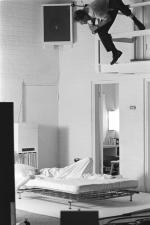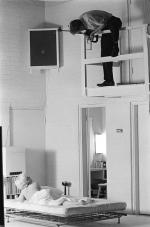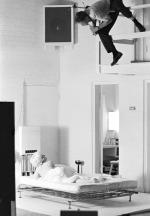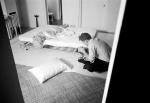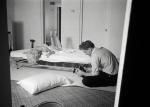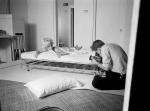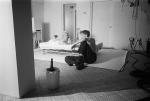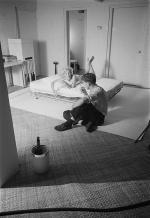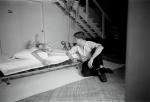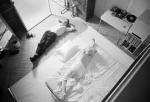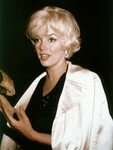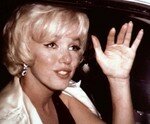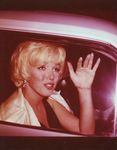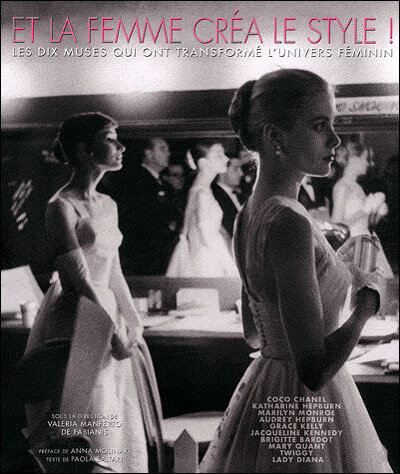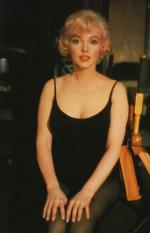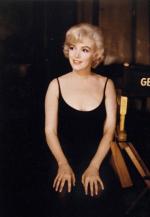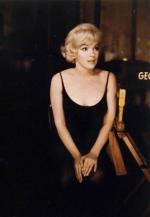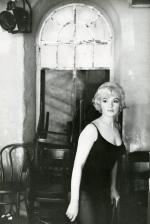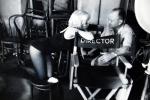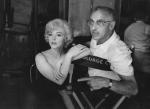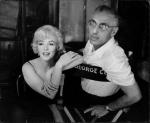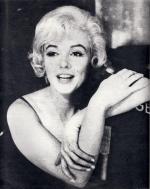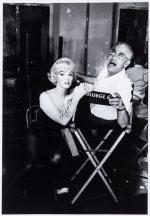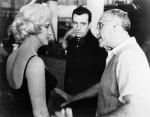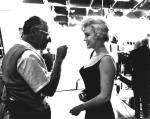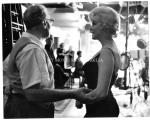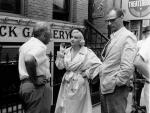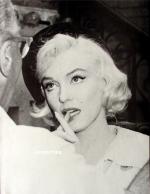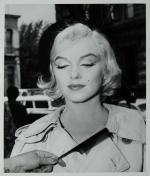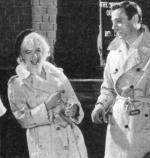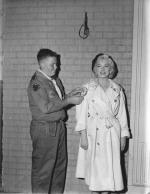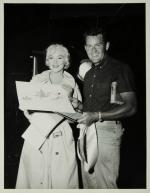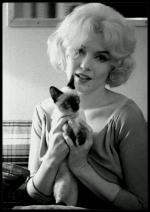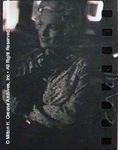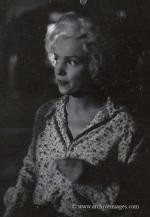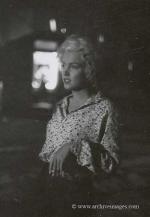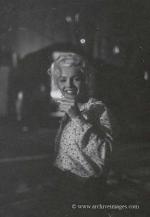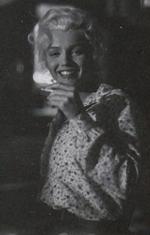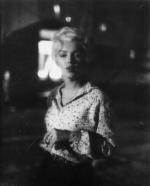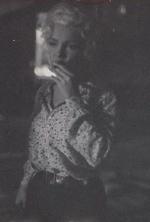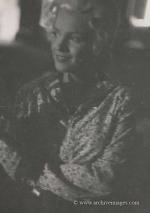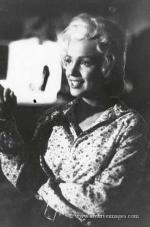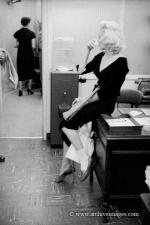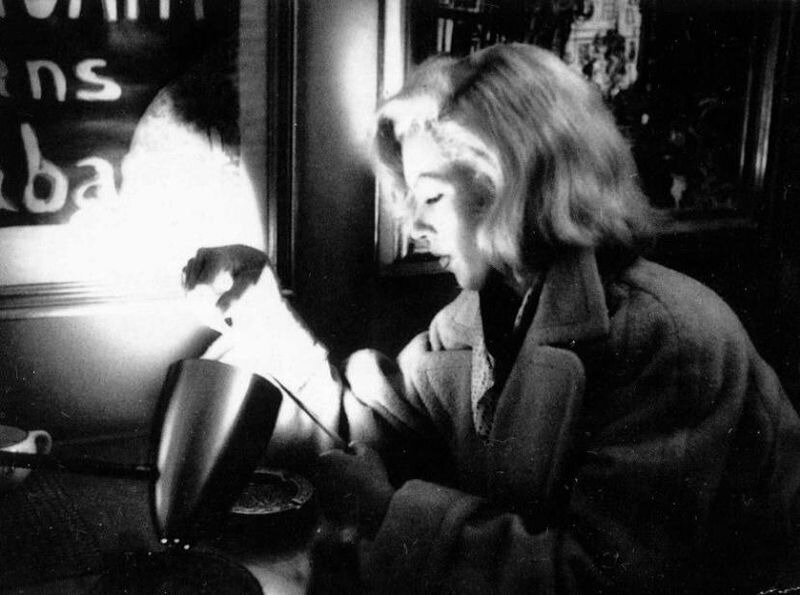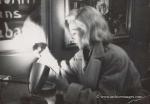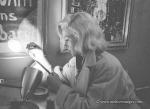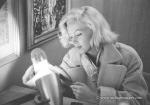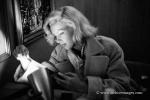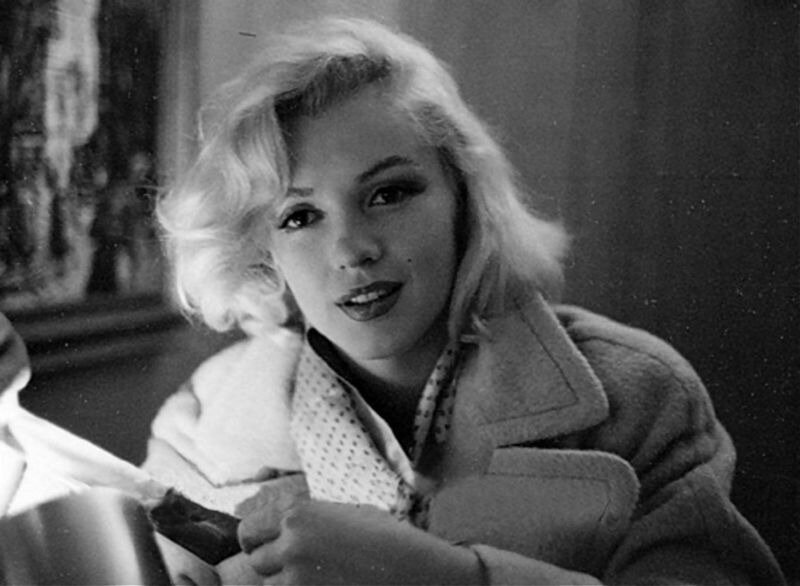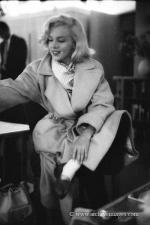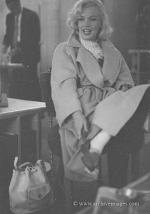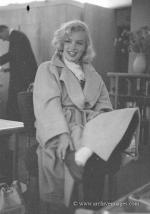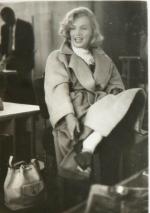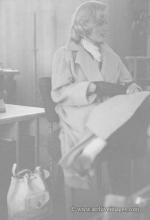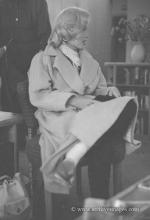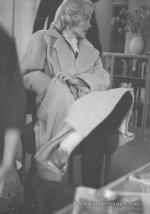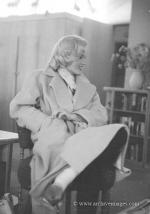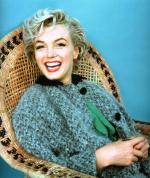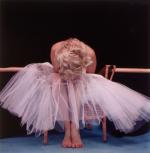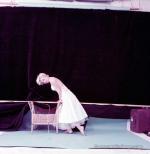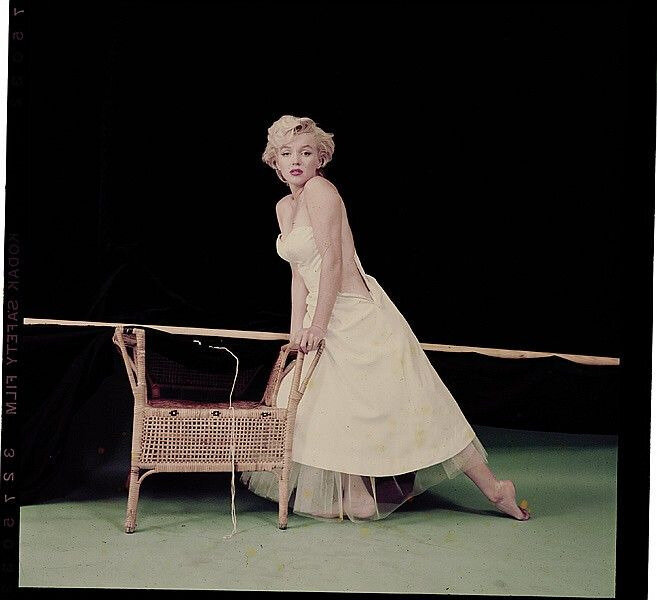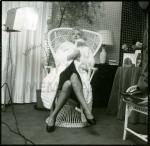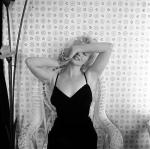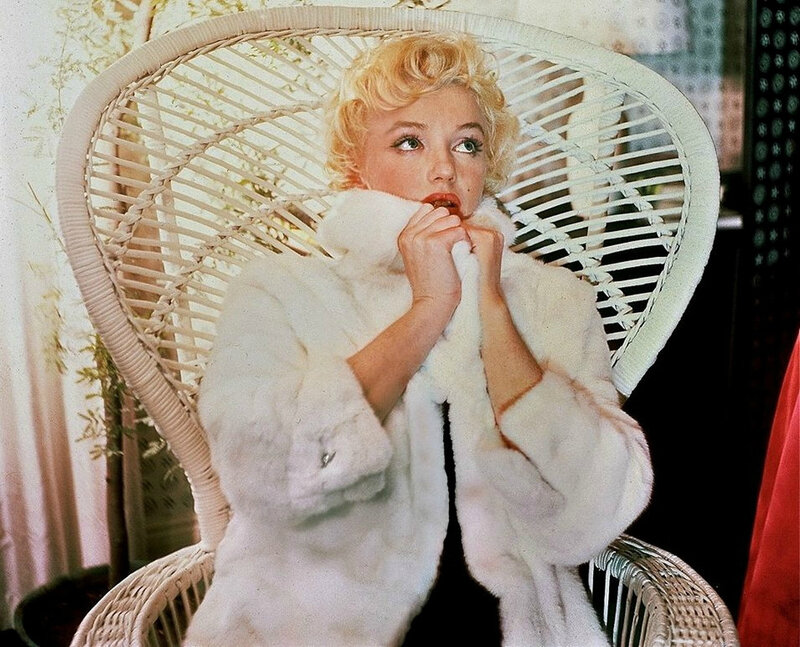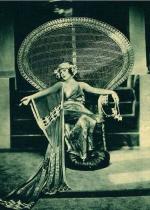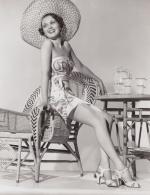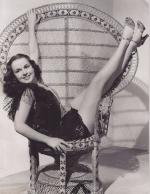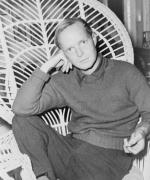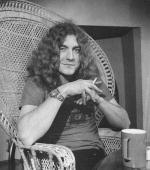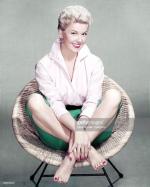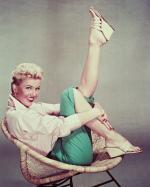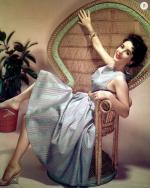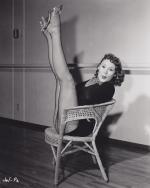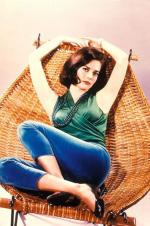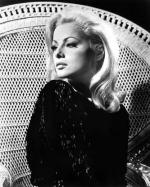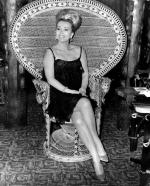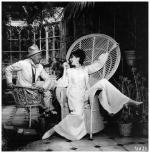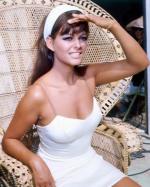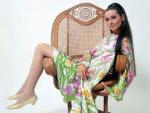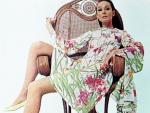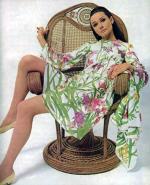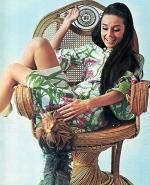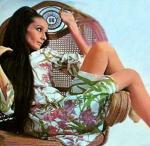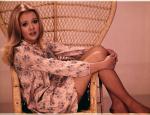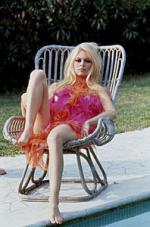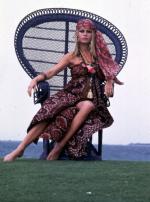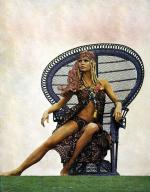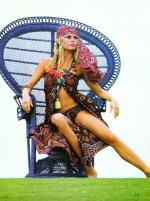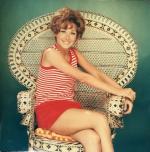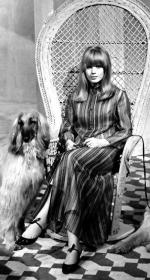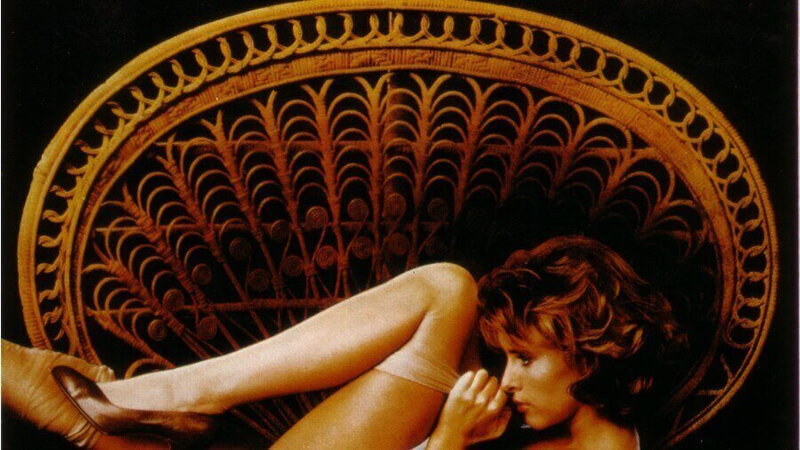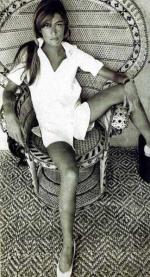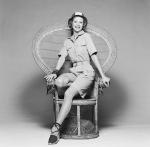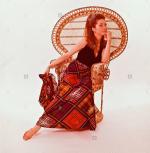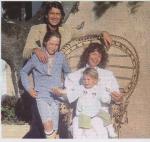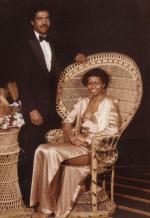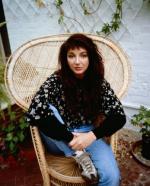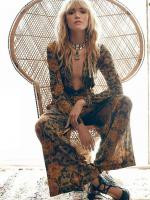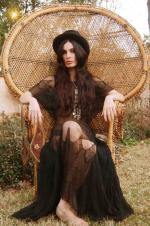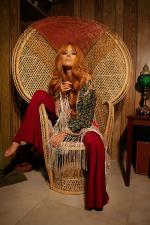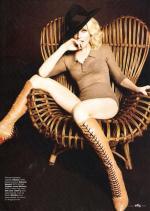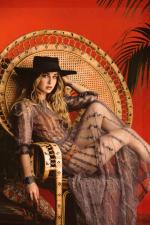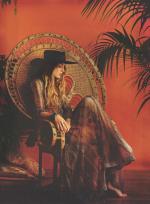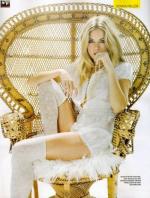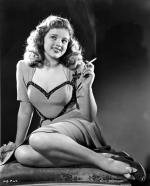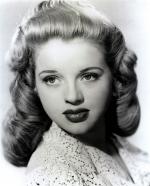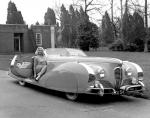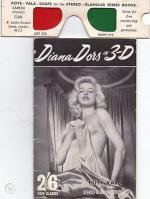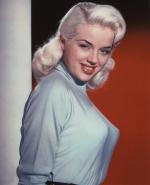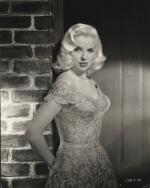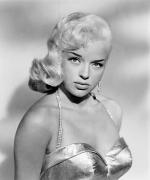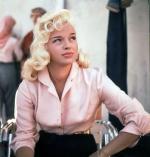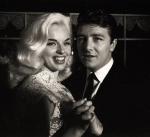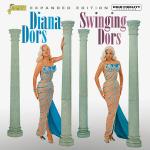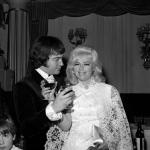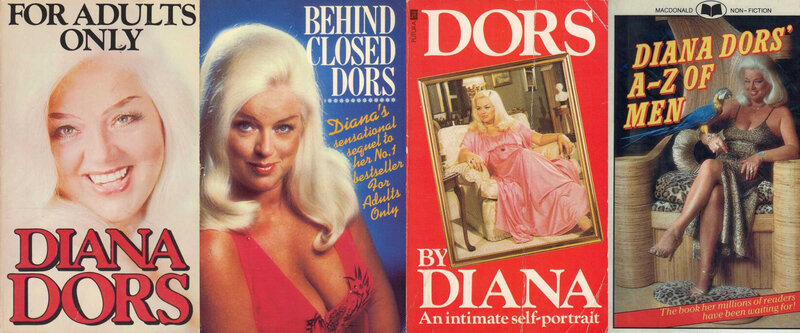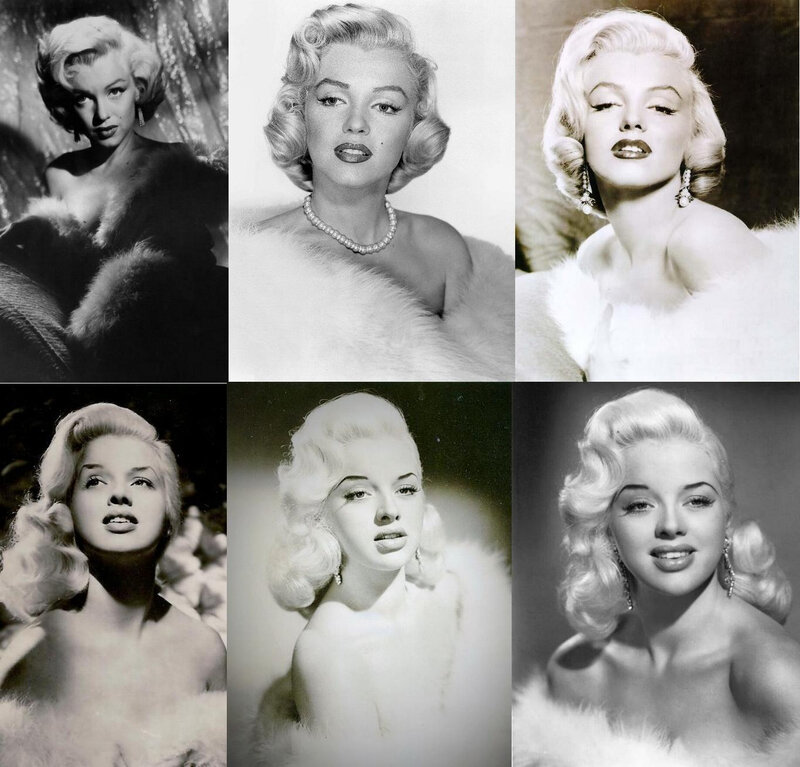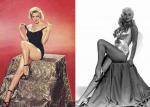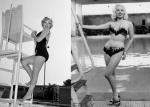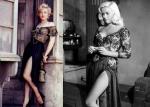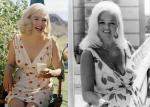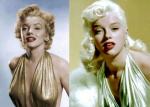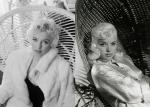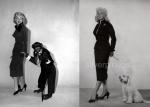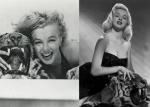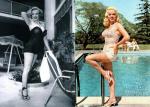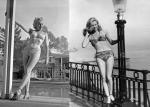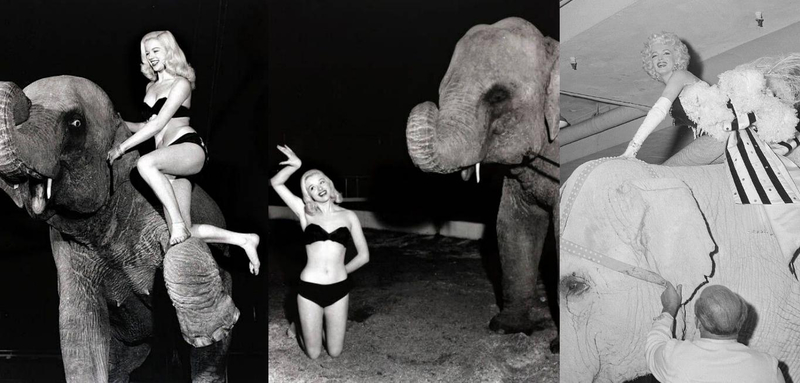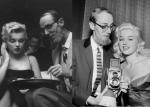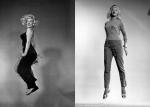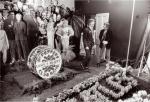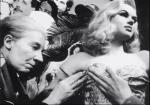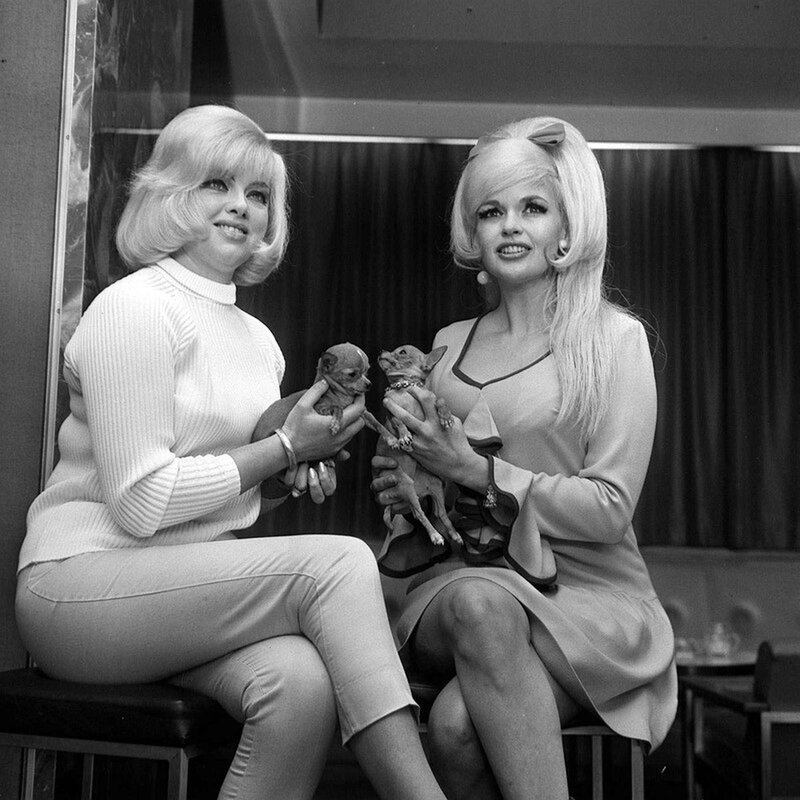Maison, Meubles, Déco
House, Furnitures, Deco
Lot 582: MARILYN MONROE HOME RENOVATION NOTEBOOK
An extraordinary, blue cloth over board, "project management" three-ring binder kept by one of Monroe's assistants chronicling the purchase and ongoing renovation and decoration of her home located at 12305 Fifth Helena Drive in Brentwood, California. The notebook begins with an information sheet and lot diagram as well as a typed renovation and additions budget for the property totaling $34,877.36 against a purchase price of $57,609.95. The book also contains four pages of phone numbers, including neighbors, utilities, friends, secretaries, and professional colleagues, dated January 20, 1962; a list of the appliances in the kitchen and their cost; three pages regarding furniture and shipments from Mexico; approximately 36 business cards from various contractors; approximately 28 pages of notes on various renovation projects and to-do lists; a page with notes regarding terracing and planting the hillside; seven drawings of exterior floor plan for possible apartment above the garage for a cook; three renderings of options for a table and another decorative element for the home; and a listing of bills due as of August 16, 1962. The last page of the book lists "Moet - Champagne vintage 1952/ et Chandon a Epernay/ Cuvee Dom Perignon - 13.88." The book lists dates that furniture is due to be delivered from various suppliers, many after Monroe's death, as well as dimensions of each room of the home for the purpose of ordering "white India" carpet. It also has estimates to have the pool resurfaced, water heater moved, fountain built, and laundry room and shower expanded for people using the pool as well as notes about decoration of a "play room," fabrication of a new gate, bars for windows, and shelving to be built, among many other things. The notebook makes it very clear that the home was a work in progress at the time of Monroe's death.
11 1/4 by 10 inches
Estimate: $4,000 - $6,000


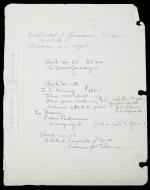




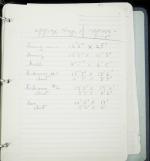
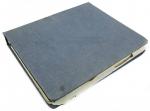
Lot 586: MARILYN MONROE DOCUMENTS REGARDING FURNISHING HER HOME
A group of invoices dating to February 28, 1962, from various Mexican boutiques listing the purchase of a great number of pieces of furniture and home furnishings, including enamel trays, benches, chairs, tables, and other pieces purchased in Mexico for Monroe's Fifth Helena Drive residence. Together with a two-page typed signed letter dated July 26, 1962, signed "Mura," giving a full report to Monroe's secretary Eunice Murray regarding her buying trip in Mexico and status of custom-ordered tin panels, fabric, rugs, iron fire screen, and tiles. The letter demonstrates the fact that Monroe was still quite actively working on her home at the time of her death.
Largest, 8 1/2 by 11 inches
Estimate: $400 - $600
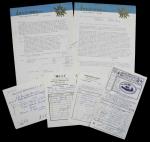
Lot 476: MARILYN MONROE SILVER STEELMASTER FOUR-DRAWER FILING CABINET
A vintage filing cabinet marked "Steelmaster/ Art Steel Cabinet/ New York." The third drawer has a false front concealing a combination lock safe.
52 1/4 by 18 by 26 1/2 inches
Estimate: $800 - $1,200



Lot 477: MARILYN MONROE BROWN DEVON FOUR-DRAWER FILING CABINET
A vintage filing cabinet marked "W.H. Harper Co./ Devon/ El Segundo." With a metal security rod attached by a padlock.
52 1/4 by 18 by 26 inches
Estimate: $800 - $1,200


Lot 479: MARILYN MONROE FILE FOLDERS
Two blue Oxford file folders with tab tops and labels reading "MM - Personal" and "MM - Paid Bills - 1961." These are original folders as they were found in Monroe's filing cabinets.
9 1/2 by 11 3/4 inches
Estimate: $80 - $120
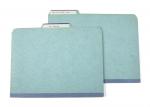
Lot 3: MARILYN MONROE CURIO CABINET
A wood curio five-tier shelf from Marilyn Monroe's New York home, located at 444 East 57th Street, gifted to her friend and personal masseur, Ralph Roberts. Accompanied by a copy of a letter from Roberts.
31 by 13 ½ by 6 inches
PROVENANCE: Partial lot 340, “Film and Television Memorabilia,” Christie's East, New York, Sale number 7821, December 18, 1995
Estimate: $300 - $500

Lot 539: MARILYN MONROE BARCELONA CHAIR
Vintage black button tufted leather and chrome frame. Unmarked.
29 1/2 by 29 1/4 by 30 inches
Estimate: $3,000 - $5,000
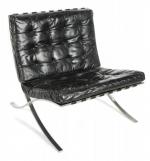
Lot 540: MARILYN MONROE BUTLER TRAY ON FOLDING STAND
A metal and wood tray and stand.
24 by 31 by 22 inches
Estimate: $1,000 - $2,000
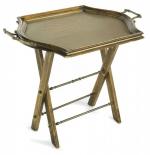
Lot 541: MARILYN MONROE CORDUROY UPHOLSTERED CLUB CHAIR
With a loose seat cushion.
33 by 32 by 36 inches
Estimate: $2,000 - $3,000
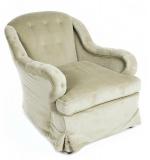
Lot 542: MARILYN MONROE TWO DECORATIVE METAL BENCHES
Including a loveseat with a silk tapestry cover and a single seat with a floral needlepoint pillow cover.
Larger, 29 by 53 by 17 inches
Estimate: $2,000 - $3,000

Lot 543: MARILYN MONROE CANED CHAISE LOUNGE
With turned wood frame.
24 by 76 by 26 inches
Estimate: $3,000 - $5,000

Lot 544: MARILYN MONROE CANED LOVESEAT
With a carved walnut frame and decorative back.
32 by 40 by 18 inches
Estimate: $3,000 - $5,000
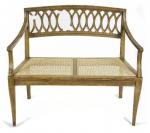
Lot 545: MARILYN MONROE THREE WICKER CHAIRS
Including a Heywood-Wakefield style armchair, a rocker with a caned seat, and a small barrel-back chair (damaged).
Largest, 39 by 25 by 20 inches
Estimate: $2,000 - $3,000

Lot 546: MARILYN MONROE TWO VINTAGE SIDE CHAIRS
One with a caned seat and one with a woven seat (damaged).
Taller, 35 by 17 by 14 inches
Estimate: $1,500 - $2,500

Lot 553: MARILYN MONROE VICTORIAN PAPIER MÂCHÉ CHAIR
With shell and mother of pearl inlay and a caned seat.
32 by 15 by 13 1/2 inches
Estimate: $2,000 - $3,000

Lot 557: MARILYN MONROE ROCOCO STYLE BENCH
A carved wood and parcel gilt satin upholstered bench.
24 by 40 1/2 by 14 inches
Estimate: $2,000 - $4,000

Lot 558: MARILYN MONROE ROCOCO STYLE COFFEE TABLE
A carved wood coffee table with canted edges and inset parchment top.
19 by 46 by 38 inches
Estimate: $2,000 - $4,000

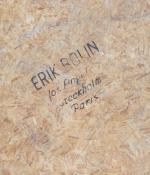
Lot 547: MARILYN MONROE BURLWOOD VENEER THREE-DRAWER DRESSER
With movable jewelry display trays inside the top drawer.
36 by 47 1/2 by 22 inches
Estimate: $3,000 - $5,000

Lot 548: MARILYN MONROE BAKER CAMPAIGN DRESSER
A modern four-drawer dresser in a British 19th Century style, with brass mounted hardware.
22 by 62 by 19 inches
Estimate: $3,000 - $5,000

Lot 549: MARILYN MONROE WOOD CHEST
A locked wood chest in a rococo style.
21 by 48 by 20 inches
Estimate: $2,000 - $3,000


Lot 550: MARILYN MONROE WOVEN CHEST ON CASTERS
A woven hamper on wood casters. With interior painted decoration.
15 by 28 by 14 1/2 inches
Estimate: $1,000 - $2,000
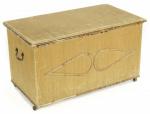
Lot 551: MARILYN MONROE CERAMIC PINK AND WHITE DOOR PANEL
With transfer printed rose decoration, together with two key-shaped items. Marked on the back "1960 BLD."
11 by 3 inches
Estimate: $400 - $600

Lot 552: MARILYN MONROE HANDPAINTED WOODEN DOOR PANEL
With floral decoration and ivory crackle finish.
11 by 3 1/8 inches
Estimate: $400 - $600

Lot 4: MARILYN MONROE OWNED LAMP BASE
A painted plaster chalkware lamp base in the image of a girl sitting by a tree from Marilyn Monroe's New York home, located at 444 East 57th Street, gifted to her friend and personal masseur, Ralph Roberts. Accompanied by a copy of a letter from Roberts.
Height, 12 inches
PROVENANCE: Partial Lot 340, “Film and Television Memorabilia,” Christie's East, New York, Sale number 7821, December 18, 1995
Estimate: $300 - $500
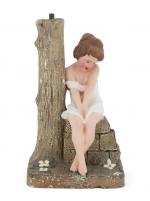
Lot 10: MARILYN MONROE OWNED OIL LAMP BASE
An opaque glass oil lamp base from Marilyn Monroe's New York home, located at 444 East 57th Street, gifted to her friend and personal masseur, Ralph Roberts. In a letter to the consignor, Roberts states Monroe won the lamp at a country auction and used it as a flower vase, usually placed on a round table in front of a window looking toward the river. Accompanied by a copy of a letter from Roberts.
Height, approximately 11 inches
PROVENANCE: Lot 340, “Film and Television Memorabilia,” Christie's East, New York, Sale number 7821, December 18, 1995
Estimate: $300 - $500
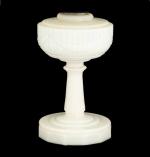
Lot 554: MARILYN MONROE CUT CRYSTAL PERFUME ETUI
With a sterling finial marked "Sterling."
Length, 4 1/2 inches
Estimate: $600 - $800

Lot 555: MARILYN MONROE CUT CRYSTAL CHATELAINE ETUI
With a rim marked "Sterling." (Lacking lid.)
Length, 2 inches
Estimate: $400 - $600
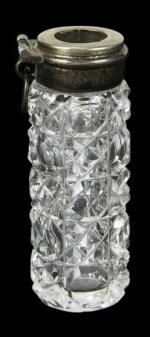
Lot 244: MARILYN MONROE VINTAGE ABSTRACT PARCEL GILT FAN
A folding paper Japanese hand fan with abstract parcel gilt decoration.
15 1/2 by 24 1/2 by 2 inches
Estimate: $600 - $800

Lot 245: MARILYN MONROE VINTAGE JAPANESE PAINTED FAN
A folding paper hand fan featuring a peacock and pink flowering vines. In a frame under glass.
13 1/2 by 21 1/4 by 2 inches
Estimate: $600 - $800

Lot 559: MARILYN MONROE VINTAGE BROWN SILK HANDPAINTED FAN
A folding hand fan featuring an 18th Century man and woman. With parcel gilt birds and floral decoration. (Glass lacking.)
18 by 27 1/2 by 3 1/2 inches
Estimate: $600 - $800
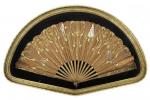
Lot 560: MARILYN MONROE VINTAGE HANDPAINTED FRENCH FAN
A white silk fan featuring a handpainted lady in a landscape, signed "A. Ravaux." (Glass broken.)
16 by 25 by 2 inches
Estimate: $600 - $800


Lot 566: MARILYN MONROE VINTAGE BLACK PEACOCK FEATHER FAN
A folding feather hand fan with carved ebonized handle.
16 by 25 by 2 1/2 inches
Estimate: $600 - $800

Lot 567: MARILYN MONROE VINTAGE BLACK LACE FAN
A lace folding hand fan with gilt decoration. In a frame under glass.
13 1/2 by 21 1/4 by 2 inches
Estimate: $600 - $800

Lot 561: MARILYN MONROE RED FRAMED NEEDLEPOINT PICTURE
Featuring a bouquet of poppies. Marked "From D.M. Ferry/ 1926" lower right.
16 1/2 by 16 inches
Estimate: $800 - $1,200
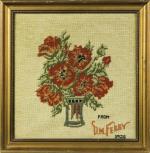
Lot 562: MARILYN MONROE GLASS COVERED WOODEN BREAKFAST TRAY
With a hand embroidered textile featuring a violet bouquet.
15 by 25 inches
Estimate: $600 - $800
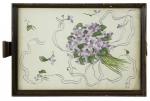
Lot 563: MARILYN MONROE RED NEEDLEPOINT PILLOW CUSHION
Red flowers on a black ground, in a later unassociated shadowbox frame.
19 3/4 by 19 3/4 inches
Estimate: $800 - $1,200
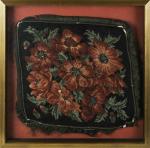
Lot 564: MARILYN MONROE BLACK NEEDLEPOINT PILLOW CUSHION
Needlepoint with pink flowers on a black ground, in a later unassociated shadowbox frame.
19 3/4 by 19 3/4 inches
Estimate: $800 - $1,200
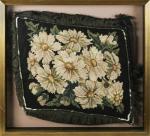
Lot 565: MARILYN MONROE NEEDLEPOINT PIANO STOOL
An ebonized carved wood stool with opening top featuring a needlepoint upholstery of three red robins on a flowering tree branch.
19 1/4 by 19 1/4 by 14 inches
Estimate: $1,000 - $2,000
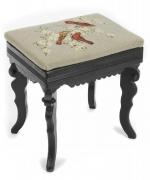
Lot 505: MARILYN MONROE CALENDAR PENCIL HOLDER
A metal pencil holder cup imprinted with a calendar and having a leather swiveling cover.
Height, 4 inches
Estimate: $400 - $600
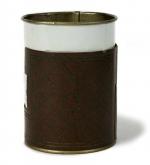
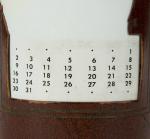
Lot 583: MARILYN MONROE PENCIL HOLDER
A vintage paper decorated tin pencil holder. The pencil holder can be seen on the coffee table of the sunroom in Monroe's Brentwood, California, home.
Estimate: $600 - $800

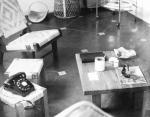
Lot 596: MARILYN MONROE VINTAGE GENERAL ELECTRIC TELECHRON CLOCK
With faux wood pattern face and black hands. Model 2H103-S.
6 by 6 1/2 by 2 3/4 inches
Estimate: $400 - $600
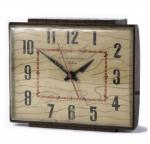
Lot 597: MARILYN MONROE TABLE LAMP
A green and brass metal table lamp with electrical cord stripped in some places. No shade.
8 1/4 inches
Estimate: $300 - $500
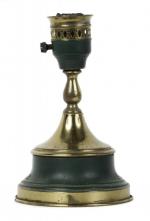
Lot 595: MARILYN MONROE COLORLESS CRYSTAL TEARDROP VASE
A vintage teardrop form bud vase.
Height, 10 inches
Estimate: $400 - $600
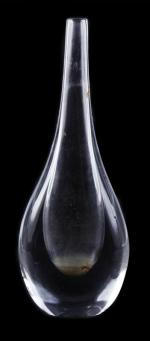
Lot 599: MARILYN MONROE EDWARDIAN SILVERPLATED VASE
A double-handled urn-form vase marked "J.B." and "1937" on the base.
Height, 8 1/2 inches
Estimate: $600 - $800
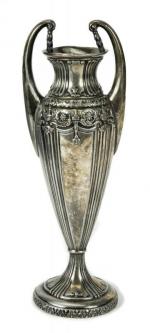
Lot 952: MARILYN MONROE PRINT
A Marilyn Monroe owned untitled print by artist, set designer and director Edward Gordon Craig from Hamlet. The woodblock print is signed with initials EGC in the lower right corner. The prints were made for the Cranach Press German edition of Hamlet printed in 1928.
Sight, 5 1/2 by 9 1/4 inches; 22 by 21 1/4 inches, overall
PROVENANCE Partial Lot 424, “The Personal Property of Marilyn Monroe,” Christie’s, New York, Sale number 9216, October 27 & 28, 1999
Estimate: $4,000 - $6,000
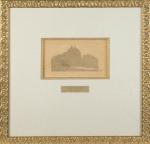

Lot 953: MARILYN MONROE LITHOGRAPH AFTER TOULOUSE-LAUTREC
A Marilyn Monroe owned lithograph printed with the words “Catalogue d’Affiches artistiques A.ARNOLD 7 rue Racine Paris.” Housed in a frame, not examined outside of frame.
Sight, 8 3/4 by 12 inches; 21 by 24 1/2 inches, overall
PROVENANCE Partial Lot 424, “The Personal Property of Marilyn Monroe,” Christie’s, New York, Sale number 9216, October 27 & 28, 1999
Estimate: $4,000 - $6,000


Lot 956: MARILYN MONROE BELL
A Marilyn Monroe bronze bell with wood handle, stamped on the interior.
Height, 10 inches
PROVENANCE Partial Lot 460, “The Personal Property of Marilyn Monroe,” Christie’s, New York, Sale number 9216, October 27 & 28, 1999
Estimate: $800 - $1,200

Lot 957: MARILYN MONROE MEXICAN WOOL THROW
A Marilyn Monroe Mexican wool throw with multicolor woven design.
Approximately 60 by 50 inches
PROVENANCE Partial Lot 450, “The Personal Property of Marilyn Monroe,” Christie’s, New York, Sale number 9216, October 27 & 28, 1999
Estimate: $1,500 - $2,500
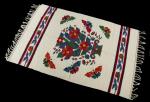

Lot 278: MARILYN MONROE GROUP OF THREE ASHTRAYS
Including a printed and parcel gilt Maxim's Paris porcelain ashtray, marked on the back "Pillivuyt/ France" and "Edite par A. Simon Paris," circa 1950, a patinated metal scallop shell ashtray, and a black glazed terra cotta ashtray displaying the Christie's 1999 sale sticker.
5 1/4 by 3 1/2 inches
PROVENANCE Partial Lot 408, “The Personal Property of Marilyn Monroe,” Christie’s, New York, Sale number 9216, October 27 & 28, 1999
Estimate: $800 - $1,200

Lot 279: MARILYN MONROE ASHTRAY
A black plastic ashtray with matchbook holder from Dan Stampler's The Steak Joint Inc. with address listed as "58 Greenwich Avenue in Greenwich Village." The Steak Joint was a village favorite run by Dan Stampler for nearly 25 years.
5 inches
Estimate: $300 - $500
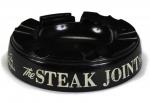
Lot 280: MARILYN MONROE AMERICAN EXPRESS KEYCHAIN
Has "American Express" and "5 year member" on the tag. .37 troy oz.
Length, 1 inch
Estimate: $400 - $600


Cuisine
Kitchen
Lot 5: MARILYN MONROE OWNED SPOONS
A pair of spoons from Marilyn Monroe's New York home, located at 444 East 57th Street, gifted to her friend and personal masseur, Ralph Roberts. The spoons have embossed portraits of women. The first has an embossed signature that reads “Lois Wilson,” the second an embossed signature that reads “Norma Shearer.” Accompanied by a copy of a letter from Roberts.
6 inches
PROVENANCE: Partial Lot 340, “Film and Television Memorabilia,” Christie's East, New York, Sale number 7821, December 18, 1995
Estimate: $300 - $500
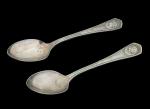
Lot 6: MARILYN MONROE OWNED GLASS CREAMER
A pink glass creamer from Marilyn Monroe's New York home, located at 444 East 57th Street, gifted to her friend and personal masseur, Ralph Roberts. In a letter to the consignor, Roberts states Marilyn bought the creamer at an antique shop between the Nevada cities of Virginia City and Reno during an outing with him and Paula Strasberg. Accompanied by a copy of a letter from Roberts.
Height, 3 inches
PROVENANCE: Partial Lot 340, “Film and Television Memorabilia,” Christie's East, New York, Sale number 7821, December 18, 1995
Estimate: $300 - $500

Lot 7: MARILYN MONROE OWNED SERVING TRAY
A round metal and glass serving tray that Marilyn Monroe used to deliver food to a party at the home of Ralph Roberts. The event was a Bon Voyage gala for May Reis and Maureen Stapleton in April 1961, both of whom were headed to Europe: Reis for vacation and Stapleton to work on the European film production of A View from the Bridge (Vu du pont). According to Roberts, guests at the party included Gloria Vanderbilt, Walter and Carol Matthau, Clifford David, and Sidney Lumet. Accompanied by a copy of a letter from Roberts.
Diameter 12 ½ inches
PROVENANCE: Partial Lot 340, “Film and Television Memorabilia,” Christie's East, New York, Sale number 7821, December 18, 1995
Estimate: $300 - $500
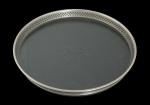
Lot 8: MARILYN MONROE OWNED COOKING PRESS
An aluminum Wearever cooking press from Marilyn Monroe's New York home, located at 444 East 57th Street, gifted to her friend and personal masseur, Ralph Roberts. Accompanied by a copy of a letter from Roberts.
Length, 8½ inches
PROVENANCE: Partial Lot 340, “Film and Television Memorabilia,” Christie's East, New York, Sale number 7821, December 18, 1995
Estimate: $300 - $500

Lot 9: MARILYN MONROE OWNED CHAMPAGNE COOLER
A metal champagne cooler brought by Marilyn Monroe to a party at the home of Ralph Roberts. The event was a Bon Voyage gala for May Reis and Maureen Stapleton in April 1961, both of whom were headed to Europe: Reis for vacation and Stapleton to work on the European film production of A View from the Bridge (Vu du pont). According to Roberts, guests at the party included Gloria Vanderbilt, Walter and Carol Matthau, Clifford David, and Sidney Lumet. Accompanied by a copy of a letter from Roberts.
Height, 9 inches
PROVENANCE: Partial Lot 340, “Film and Television Memorabilia,” Christie's East, New York, Sale number 7821, December 18, 1995
Estimate: $300 - $500
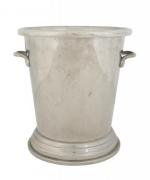
Lot 111: MARILYN MONROE BAKE KING CAKE PAN
A vintage coated tin cake pan.
2 by 9 by 9 inches
Estimate: $400 - $600
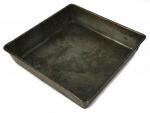
Lot 112: MARILYN MONROE YAAD DECORATIVE COPPER TRAY AND TWO OTHERS
A decorative tray marked "Yaad/ Made in Israel," together with a circular brass saucer and a large metal dish.
Copper tray, 9 3/4 by 12 1/4 inches
Estimate: $600 - $800
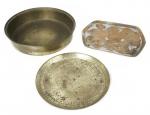

Lot 113: MARILYN MONROE GROUP OF THREE DECORATIVE PIECES
Two wood bowls and a woven basket.
Largest, diameter, 17 1/4 inches
Estimate: $600 - $800

Lot 114: MARILYN MONROE BRONZE ROOSTER NUTCRACKER
With scrolled terminals.
Length, 5 1/2 inches
Estimate: $400 - $600

Lot 115: MARILYN MONROE METLOX POPPY TRAIL DINNERWARE
In the Sculpted Grape pattern, including four dinner plates, six salad plates, five large bowls, six small bowls, eight saucers, a butter dish, a double serving bowl with handle, and a large serving bowl. Thirty-two pieces total.
Size varies
Estimate: $1,000 - $2,000

Lot 116: MARILYN MONROE ASSORTED GROUP OF COPPER COOKWARE
Including a chafing dish marked "Bazar Francais 666," three pots marked "Country Kitchen," and an unmarked pot.
Chafing dish, 13 by 16 by 10 1/2 inches
See Lot 401 for pots from the same set, “The Personal Property of Marilyn Monroe,” Christie’s, New York, Sale number 9216, October 27 & 28, 1999
Estimate: $800 - $1,200

Lot 117: MARILYN MONROE SAUTÉ PAN
A copper and brass sauté pan, made in Italy, stamped number "24."
Diameter, 10 inches
Estimate: $500 - $700

Lot 118: MARILYN MONROE GROUP OF VINTAGE COPPER HOLLOWWARE
Including a coffeepot with a wood handle marked "Majestic," a teapot marked "Old Dutch," an unmarked pitcher, and a pot marked "Bazar Francais."
Tallest, 11 inches
See Lot 401 for pots from the same set, “The Personal Property of Marilyn Monroe,” Christie’s, New York, Sale number 9216, October 27 & 28, 1999
Estimate: $600 - $800

Lot 119: MARILYN MONROE ASSORTED WOOD AND METAL KITCHEN UTENSILS
Including cooking spoons, spatulas, spreaders, knives, a serving fork, and a baster in the original vintage packaging. Twelve items total.
Size varies
Estimate: $600 - $800

Lot 121: MARILYN MONROE SET OF VINTAGE ECKO UTENSILS
A set of 10 stainless Ecko kitchen cooking utensils with black handles.
Longest, 13 inches
Estimate: $600 - $800

Lot 122: MARILYN MONROE ASSORTED METAL KITCHEN UTENSILS
Including vintage beaters, graters, strainers, measuring cups and spoons, a paring knife, and aluminum salt and pepper shakers. Fifteen items total.
Size varies
Estimate: $600 - $800

Lot 123: MARILYN MONROE CHROME TOASTMASTER TOASTER
A vintage toaster with two slots, brown Bakelite trim, and original cord and socket. Model 1B21.
6 1/4 by 9 1/2 by 5 inches
Estimate: $3,000 - $5,000

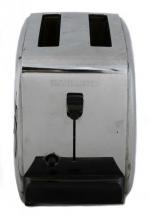
Lot 124: MARILYN MONROE CHROME JUICE-O-MAT TILT-TOP JUICER
A vintage juicer with a mechanical hand crank. Model NJ-848.
6 1/2 by 8 by 6 inches
Estimate: $3,000 - $5,000
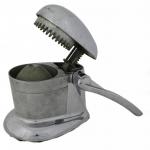
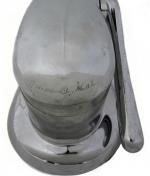
Lot 125: MARILYN MONROE DESCOWARE BELGIAN CAST IRON POT
A vintage enamelware pot with a lid, together with another lid.
Pot, diameter, 5 3/4 inches
See Lot 401 for pots from the same set, “The Personal Property of Marilyn Monroe,” Christie’s, New York, Sale number 9216, October 27 & 28, 1999
Estimate: $600 - $800

Lot 126: MARILYN MONROE LAMBERTON SCAMMELL HOTEL SERVICE PLATE
A porcelain charger with pink edges and thistle pattern on the rim, with a center monogram and gilt edges. Backstamp dates to circa 1928.
Diameter, 11 inches
Estimate: $600 - $800

Lot 127: MARILYN MONROE GROUP OF THREE CHINESE ENAMELED DISHES
Three decorative enameled metal dishes, each picturing flowers and animals, each marked "China."
3 1/8 by 4 1/8 inches
Estimate: $800 - $1,200

Lot 128: MARILYN MONROE BRONZE ENAMELED KOVSH
With a bronze bowl and polychrome enameled handle, marked "China."
Length, 7 1/2 inches
Estimate: $600 - $800

Lot 129: MARILYN MONROE ASSORTED GROUP OF DECORATIVE DISHES
Including a French glazed stoneware plate with a printed rhyme, a KPM Bavaria handpainted and parcel gilt saucer, and a decorative Italian pottery dish.
Largest, diameter, 8 inches
Estimate: $300 - $500

Lot 130: MARILYN MONROE ASSORTED DECORATIVE CERAMICS
Including a majolica oyster plate with gilt rim, marked "C.T.," a majolica double-handled sugar bowl with floral decoration, and a painted figural vase.
Plate, diameter, 9 1/4 inches
Estimate: $800 - $1,200
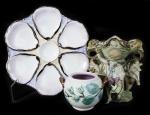
Lot 131: MARILYN MONROE PARTIAL SET OF HAVILAND LIMOGES DINNERWARE
In a parcel gilt and leaf and painted design, white porcelain with an ivory band, including four dinner plates, six luncheon plates, eight salad plates, three cream soup bowls with four underplates, two bread and butter plates, and seven saucers. Twenty-nine pieces total.
Size varies
Estimate: $800 - $1,200

Lot 240: MARILYN MONROE DINNER SERVICE
A dinner service for eight, each piece stamped "Noritake Hand Painted Japan Dresdoll" comprising one oval serving bowl, one round serving bowl, eight dinner plates, eight salad plates, seven saucers, eight small serving bowls, and eight bread plates. 41 pieces.
Dinner plates, 10 inches
Estimate: $5,000 - $7,000

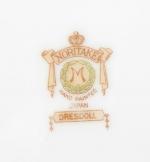
Lot 241: MARILYN MONROE ASSORTED ASIAN INSPIRED TABLEWARE
Including an earthenware Regout Timor plate, a set of four Nippon double-handled dishes decorated with birds, and a set of five Chinese soup spoons. Ten pieces total.
Largest, diameter, 8 inches
Estimate: $800 - $1,200
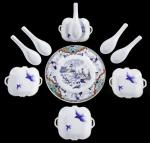
Lot 242: MARILYN MONROE TWO ANTIQUE ASIAN CARVED SNUFF BOTTLES
One decorated with dragons, the other with swords and instruments. (Both lacking stoppers.)
Height, 2 1/2 inches each
Estimate: $1,000 - $2,000
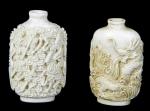
Lot 352: MARILYN MONROE VINTAGE DAISY TRIPLE ICE CRUSHER
With a hand crank. Model 16Q.
Height, 4 3/4 inches
Estimate: $400 - $600

Lot 354: MARILYN MONROE ICE BUCKET
A Walker & Hall, Sheffield, England, electroplate ice bucket with lion head ring handles. The bucket has seen so much use that the plating has worn off, and there are a good number of scratches on interior from bottles. Engraved design on side of bucket featuring flag with the letters "N C S."
8 1/4 by 7 1/4 inches
Estimate: $1,500 - $2,000
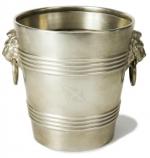
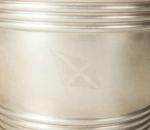
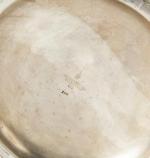
Lot 355: MARILYN MONROE PRESSED GLASS MARTINI SHAKER
With triple ridge design and metal lid.
Height, 9 1/2 inches
Estimate: $400 - $600

Lot 356: MARILYN MONROE TWO VINTAGE LIQUEUR BOTTLES
Two vintage bottles, the first a green glass bottle labeled "Dolfi Framberry," the second of colorless glass with giltmetal mounts marked "Jacquin's Forbidden Fruit Liqueur."
Taller, 12 1/2 inches
Estimate: $600 - $800

Lot 357: MARILYN MONROE CASED AMBER GLASS DECANTER SET
A mid-century decanter with crystal finial, five cordials, and a black ridged circular undertray.
Tallest, 10 inches
Estimate: $1,200 - $1,800

Lot 359: MARILYN MONROE AMBER CUT-TO-CLEAR DECANTER
Decorated with a hand cut floral and foliate pattern. Bottle marked "Handblown, Made in Czechoslovakia" with an affixed label marked "Bischoff Cordials/ Double Kummel."
Height, 15 inches
Estimate: $600 - $800

Lot 360: MARILYN MONROE RUBY CUT-TO-CLEAR WINE DECANTER
With grape and leaf decoration. (Lacking stopper.)
Height, 11 1/2 inches
Estimate: $600 - $800
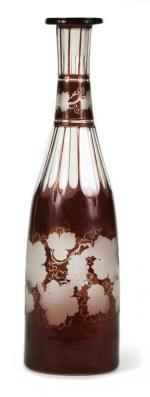
Lot 361: MARILYN MONROE ETCHED GLASS DECANTER
A double-gourd shaped bottle with allover etched floral decoration and a sterling rim with marks for Birmingham, 1911-12. (Lacking stopper.)
Height, 11 inches
Estimate: $600 - $800
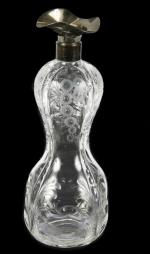
Lot 362: MARILYN MONROE PAIR OF PRESSED GLASS DECANTERS
With floral decoration, unmarked.
Height, 15 1/2 inches
Estimate: $600 - $800
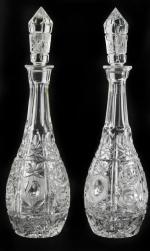
Lot 363: MARILYN MONROE ETCHED GLASS DECANTER
With a handpainted parcel gilt base and rim and engraved floral and foliate design on the body.
Height, 8 inches
Estimate: $600 - $800
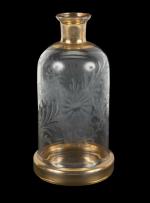
Lot 364: MARILYN MONROE GROUP OF THREE ASSORTED DECANTER STOPPERS
One is ruby flashed cut glass and the other two are faceted glass with cork plugs.
Tallest, 4 inches
Estimate: $400 - $600

Lot 365: MARILYN MONROE STERLING COLLAPSIBLE TRAVEL CUP
With hallmarks for Germany and "800." 2.47 troy oz.
Height, 3 1/4 inches
Estimate: $600 - $800
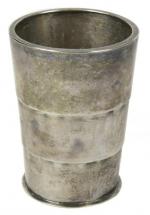
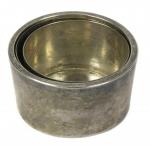
Lot 366: MARILYN MONROE METAL COLLAPSIBLE TRAVEL CUP
A base metal cup with metal loops on the rim.
Height, 3 1/2 inches
Estimate: $400 - $600
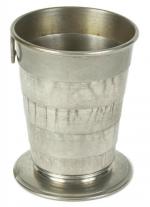
Lot 367: MARILYN MONROE BRONZE AND METAL MIDDLE EASTERN CUP
With punctured design throughout.
Height, 3 3/4 inches
Estimate: $400 - $600
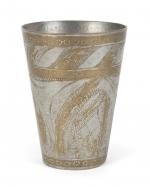
Lot 587: MARILYN MONROE PHOTOGRAPHS OF FIFTH HELENA DRIVE PROPERTY
A group of four vintage black and white photographs, most likely of the kitchen and laundry room of the guest house at Monroe's Fifth Helena Drive property prior to her renovations and decorating.
8 by 10 inches
Estimate: $300 - $500
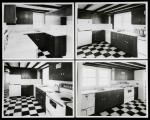
Lot 588: MARILYN MONROE HEART-FORM COASTER
On three feet, marked "HW Limited/ EPNS."
4 by 4 inches
Estimate: $400 - $600
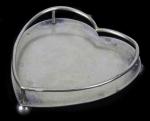
Lot 589: MARILYN MONROE GORHAM STERLING RETICULATED HEART DISH
With scrolling bows and ribbons, marked "Sterling." 1.50 troy oz.
1 by 5 by 4 1/2 inches
Estimate: $600 - $800

Lot 590: MARILYN MONROE COPPER HEART-FORM CANDLE HOLDER
With a wooden ring handle, marked "Chase USA."
5 by 3 3/4 inches
Estimate: $400 - $600

Lot 591: MARILYN MONROE SCALLOPED EDGE METAL CANDLE BASE
With faux hallmarks. Together with a shell fragment.
Diameter, 3 inches
Estimate: $400 - $600

Lot 592: MARILYN MONROE VINTAGE MOUNT WASHINGTON ROSE BOWL
A hand decorated blue satin glass bowl with crimped rim.
Height, 3 3/4 inches; Diameter, 4 1/2 inches
Estimate: $400 - $600
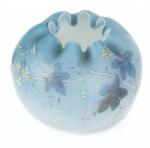
Lot 593: MARILYN MONROE VINTAGE FENTON HOBNAIL DISH
A blue opalescent hobnail square dish.
4 1/2 by 4 1/2 inches
Estimate: $400 - $600
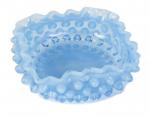
Lot 594: MARILYN MONROE TRI-FORM TRINKET BOX
With figural scenes and putti on the lid and Hanau-type marks. 7.25 troy oz., but not marked sterling.
1 1/2 by 5 1/4 by 4 3/4 inches
Estimate: $800 - $1,200

Lot 598: MARILYN MONROE VINTAGE GLO-MAR BRASS SHELL DISH
A scallop shell trinket dish, marked on the base.
4 3/4 by 4 1/2 inches
Estimate: $400 - $600
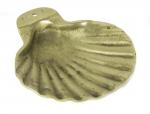
Lot 955: MARILYN MONROE GREEN GLASS CARAFE
A Marilyn Monroe owned green-tinted mallet form glass carafe. A Christie's lot sticker is affixed to the underside.
Height, 10 1/2 inches
PROVENANCE Partial Lot 406, "The Personal Property of Marilyn Monroe," Christie's, New York, Sale number 9216, October 27 & 28, 1999
Estimate: $3,000 - $5,000
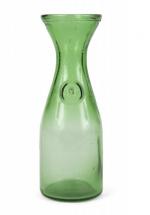
Livres & Magazines
Books & Magazines
Lot 12: MARILYN MONROE OWNED MAGAZINES
A group of nine gossip magazines owned by Marilyn Monroe and packed into a trunk as she was moving out of her Roxbury, Connecticut, home when she and Arthur Miller were separating. Monroe is featured on most covers and in many articles; titles of magazines include 'Inside Hollywood' (May 1960), 'Hush-Hush' (November 1960), 'Confidential' (September 1961), 'Movie Fan' (July 1954), 'Untold Secrets' (October 1961), 'Screenland' (July 1962), 'Movie World' (March 1953), 'Movie Life' (May 1948) and 'Kroniek Van De Week' (March 1949). The original consignor was Ralph Roberts, Monroe's masseuse and confidant.
Largest, 14 ¼ by 10 ¼ inches
PROVENANCE: Partial Lot 22, “Film and Television Memorabilia,” Christie's East, New York, Sale number 7821, December 18, 1995
Estimate: $800 - $1,000

Lot 155: MARILYN MONROE BOOK OF POETRY
A hardcover copy of Good Fellowship, a book of poetry compiled by Samuel Francis Woolard, 1909, by The Goldsmith-Woolard Publishing Co., Wichita, Kansas. Faint pencil marking on inside front cover reads, "MM 12/53." A number of page corners are creased as they had been dog eared. Additionally, some passages have brackets faintly drawn around them, including: "My character may be my own, but my reputation belongs to any old body that enjoys gossiping more than telling the truth"; "Here's to the woman who has a smile for every joy, a tear for every sorrow, a consolation for every grief, an excuse for every fault, a prayer for every misfortune, an encouragement for every hope. - Sainte Foix"; "Here's to the only true language of love: A Kiss," among others.
8 1/8 by 4 1/4 inches
Estimate: $2,000 - $3,000
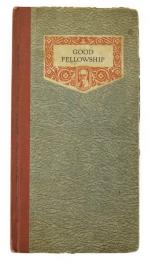
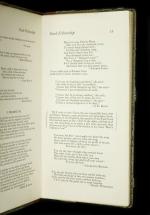
Lot 268: MARILYN MONROE CUSTOM BOUND COPY OF ARTHUR MILLER'S COLLECTED WORKS
A red leather clamshell box with gilt designs, title on spine and a simple "MM" on the lower right corner. The ivory silk satin lined box contains a matching red leather bound volume with "MM" on cover, gilt edged pages and chartreuse silk satin boards and end papers. Special dedication page reads, "This first copy/ of the first edition/ has been specially hand-bound/ for Marilyn." Arthur Miller's Collected Plays, The Viking Press, copyright 1957. Bound by Gerhard Gerlach, stamped in gold inside back cover.
9 1/2 by 6 3/4 inches
Estimate: $40,000 - $60,000

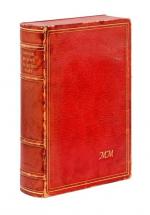


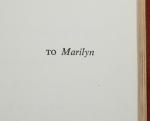
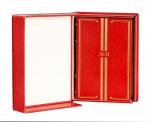
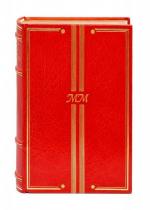
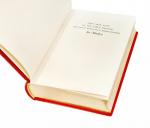

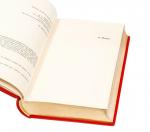

Lot 106: MARILYN MONROE COOKBOOK
A hardcover copy of The New Fannie Farmer Boston Cooking - School Cookbook, ninth edition, 3rd printing 1954 by Little Brown and Company, Boston. The encyclopedic cookbook also contains an index card with newspaper clippings stapled to the card featuring recipes for "Hearty Hot Lettuce Salad" and "Dinner with Lamb" and a small four-page booklet torn from a magazine featuring recipes for "Frankfurter Spaghetti," "Beefsteak Bundles," "Beef and Potato Loaf," among others. Page 53 features acid stains left by a piece of newspaper torn from the drama section of the Los Angeles Times dated December 26, 1956, used to mark the page about planning buffet meals for parties.
8 1/2 by 5 3/4 inches
Estimate: $1,500 - $2,500

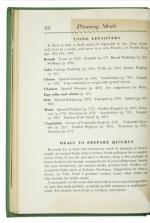

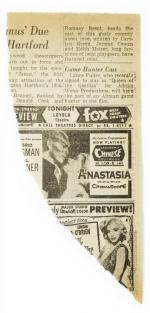

Lot 107: MARILYN MONROE MEXICAN COOKBOOK
A soft cover spiral-bound copy of Elena's Famous Mexican and Spanish Recipes, copyright 1944 Elena Zelayeta, 30th printing June 1, 1950, by Dettners Printing House, San Francisco. This best selling cookbook by Zelayeta is credited with introducing traditional Mexican and Spanish cooking to many American households.
9 by 6 1/2 inches
Estimate: $1,500 - $2,500



Lot 108: MARILYN MONROE COOKBOOK
A hardcover copy of The Household Searchlight Recipe Book, 13th printing 1940 by The Household Magazine, Topeka, Kansas. The pages are indexed in tabs by chapter, including chapters on "Fish and Wild Game," "Canning and Preserving," "Pastries," "Soups," and many others. Some cooking stains to the pages in the meat section, whose index tab has been lost.
10 1/2 by 7 1/4 inches
Estimate: $800 - $1,200
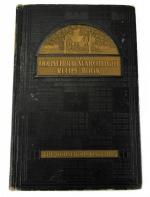
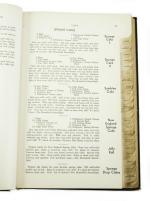
Lot 110: MARILYN MONROE HOMEMAKING BOOK
A hardcover copy of the Searchlight Homemaking Guide, 2nd edition 1949 by Household Topeka, Kansas. The pages are indexed in tabs by chapter, including chapters on "Etiquette," "Exercise and Good Looks," "The Sickroom," "Physical Care of the Baby," "Building the Home," "Floors Woodwork and Walls," "Buying Fabrics," "The Laundry," "Destroying Household Pests," and others. A hole has been drilled through the upper margin starting at the back cover of the book and going through the last 60 pages.
10 1/4 by 7 inches
Estimate: $800 - $1,200
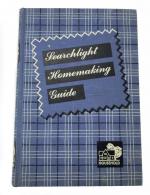
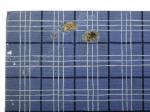
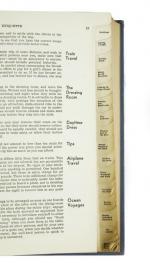
Lot 868: MARILYN MONROE OWNED BOOK
A Marilyn Monroe owned copy of The Open Mind by J. Robert Oppenheimer (New York: Simon and Schuster, 1955). Christie’s bookplate affixed to endpaper. The hardcover book is accompanied by a paper dust jacket and a lotted Christie's bookmark.
5 3/4 by 8 1/2 inches
PROVENANCE Partial Lot 563, "The Personal Property of Marilyn Monroe," Christie's, New York, Sale number 9216, October 27 & 28, 1999
Estimate: $1,000 - $2,000
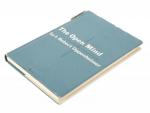
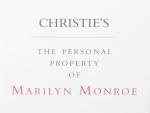
Lot 869: MARILYN MONROE OWNED BOOK
A Marilyn Monroe owned copy of Everyman’s Search by Rebecca Beard (New York: Harper & Brothers, 1950). Christie’s bookplate affixed to endpaper. The hardcover book is accompanied by a paper dust jacket and a lotted Christie's bookmark. Additionally stamped on the title page “Women’s League Library/ Old First Church/ Huntington, N.Y.”
5 3/4 by 8 1/2 inches
PROVENANCE Partial Lot 563, "The Personal Property of Marilyn Monroe," Christie's, New York, Sale number 9216, October 27 & 28, 1999
Estimate: $1,000 - $2,000
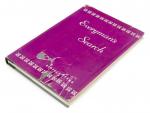
Lot 870: MARILYN MONROE OWNED BOOK
A Marilyn Monroe owned copy of The Devil's Advocate by Morris L. West (New York: William Morrow & Company, 1959). Christie’s bookplate affixed to endpaper.
5 1/2 by 8 1/4 inches
PROVENANCE Partial Lot 546, "The Personal Property of Marilyn Monroe," Christie's, New York, Sale number 9216, October 27 & 28, 1999
Estimate: $1,000 - $2,000


Lot 871: MARILYN MONROE OWNED BOOKS
A copy of Karl A. Menninger's Man Against Himself (New York: Harcourt, Brace and Company, 1938) and Dr. Joseph Murphy's The Miracles of Your Mind (San Gabriel, California: Willing Publishing Company, 1953) from the personal collection of Marilyn Monroe with a Christie's auction bookplate on the front inside covers.
Larger, 8 3/4 by 6 inches
PROVENANCE Partial Lot 559, “The Personal Property of Marilyn Monroe,” Christie’s, New York, Sale number 9216, October 27 & 28, 1999
Estimate: $2,000 - $3,000


Lot 905: MARILYN MONROE PRAYER BOOK FOR JEWISH WORSHIP
A Marilyn Monroe Union Prayer Book for Jewish Worship. The cover is stamped “Marilyn Monroe Miller” and inscribed to Monroe “For Marilyn – with all of my best wishes and deepest respect – fondly – Bob.” Christie’s bookplate is affixed to the interior of the front cover.
6 3/4 by 5 by 1 inches
PROVENANCE Lot 9A, “The Personal Property of Marilyn Monroe,” Christie’s, New York, Sale number 9216, October 27 & 28, 1999
Estimate: $20,000 - $40,000
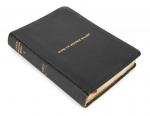

Lot 584: MARILYN MONROE HORTICULTURE MAGAZINES
Three copies of Horticulture, "America's Authentic Garden Magazine," dated October 1960, January 1961, and June 1962. Each magazine has typed adhesive labels addressed to Monroe, two reading "Mrs. Marilyn Miller" and the third "Miss Marilyn Monroe," all to her 444 East 57th Street address. The October 1960 issue has this address crossed out and "Beverly Hills Hotel/ Beverly Hills, California" written beside the label. Another issue of Horticulture magazine is visible on the coffee table of the sunroom in Monroe’s Brentwood home in the photograph on the right.
11 by 8 1/4 inches
Estimate: $1,000 - $1,500
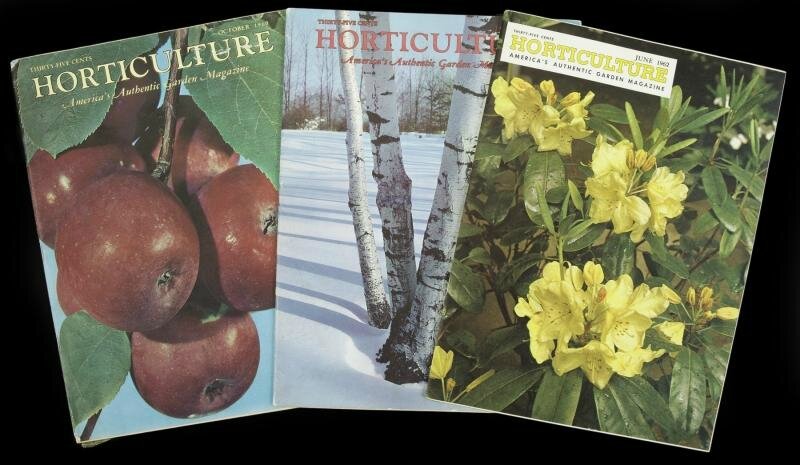
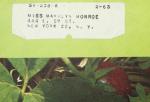
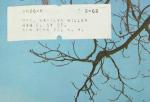

Lot 514: MARILYN MONROE SCULPTURE BOOK SIGNED BY THE ARTIST
A copy of The Sculpture of William Zorach, by Paul S. Wingert, Pitman Publishing Corp., New York 1938 signed by Zorach to Marilyn Monroe and Arthur Miller January 1, 1957. Monroe owned one of Zorach's sculptures titled "Young Woman." The book is accompanied by a letter from The Downtown Gallery dated April 24, 1957, regarding this small sculpture, which Monroe had "purchased just before Christmas," to ensure that Monroe received the piece after lending it to the University of Illinois for an exhibition.
Book, 10 by 7 inches
Estimate: $400 - $600
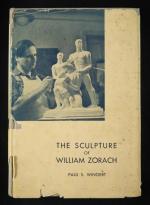
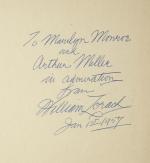
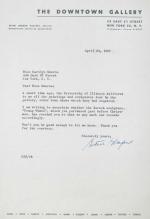
Récompenses
Awards
Lot 26: MARILYN MONROE NEW FACES AWARD
A Detroit Press New Faces Award, 1952, presented to Marilyn Monroe by Hollywood gossip columnist Hedda Hopper. The award is designed as a wall mirror of birch wood with a leather handle and surrounded is by fourteen electric light sockets. The plaque is engraved “Marilyn Monroe Winner-First Place Detroit Free Press New Faces Award 1952.” Accompanied by a copy of the 1999 Christie's The Personal Property of Marilyn Monroe auction catalog.
22 by 18 by 2 inches
PROVENANCE: Lot 312, "The Personal Property of Marilyn Monroe," Christie's, New York, Sale number 9216, October 27 & 28, 1999
Estimate: $20,000 - $40,000
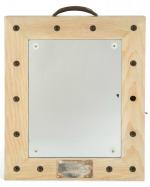
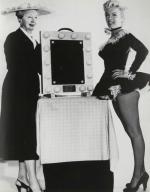


Lot 832: MARILYN MONROE 1953 AWARD
A Marilyn Monroe trophy honoring Monroe as the 1953 World Film Favorite by The International Press of Hollywood.
Height, 23 inches
PROVENANCE Lot 320, "The Personal Property of Marilyn Monroe," Christie's, New York, Sale number 9216, October 27 & 28, 1999
Estimate: $20,000 - $30,000
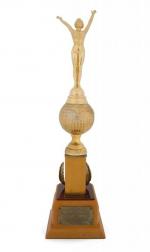

Lot 856: MARILYN MONROE "I'M GONNA FILE MY CLAIM" RECORD AWARD
An in-house record award presented to Simon House Music to commemorate the sale of more than 50,000 copies of the RCA Victor record release of “I’m Gonna File My Claim” as performed by Marilyn Monroe. Monroe performed the song in her film River of No Return (20th Century, 1954).
23 by 17 3/4 inches, framed
Estimate: $6,000 - $8,000
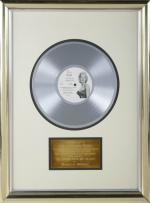
Divers
Various
Lot 2: MARILYN MONROE ST. CHRISTOPHER PENDANT
A silver tone St. Christopher pendant in the style of a wax seal given to Ralph Roberts by Marilyn Monroe. The religious medal is designed with the likeness of the patron saint. A neck chain loop is connected to the top of the medallion. According to Roberts, Natasha Lytess, Monroe's early acting coach, gave her the medal. Monroe gave the medal to Roberts together with a handwritten postcard in which she confirmed for him that she wasn't pregnant. When she gave Roberts the medal she stated, "I've outgrown Natasha." Accompanied by a copy of a letter from Roberts.
Diameter, 1 inch
PROVENANCE: Partial Lot 334, “Film & Television Memorabilia,” Christie's East, Sale number 7821, December 18, 1995
Estimate: $300 - $500

Lot 11: MARILYN MONROE OWNED BALLERINA PAPERWEIGHT
A paperweight fashioned after a ballerina, from Marilyn Monroe's New York home, located at 444 East 57th Street, gifted to Ralph Roberts. According to Roberts, the paperweight was displayed next to a photo of Broadway star Marilyn Miller in a similar ballerina pose as the paperweight. Miller is believed to have been the inspiration for Norma Jeane's name change to "Marilyn Monroe," and Monroe herself later became "Marilyn Miller" after marrying playwright Arthur Miller. In a letter to the consignor, Roberts wrote Monroe stated, "That's the other Marilyn." Accompanied by a copy of a letter from Roberts.
Height 5 inches
PROVENANCE: Partial Lot 340, “Film and Television Memorabilia,” Christie's East, New York, Sale number 7821, December 18, 1995
Estimate: $300 - $500

Lot 13: MARILYN MONROE PRESCRIPTION BOX
A small box prescribed by Dr. Davis dispensed by Hilp’s Drug Store in Reno, Nevada, for “Mrs. Miller” and dated 09/15/60. The prescription occurs while Monroe was in Nevada working on her final completed film, The Misfits (United Artists, 1961).
2½ by 1½ inches
Estimate: $800 - $1,200
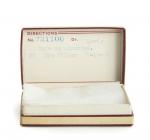

Lot 14: MARILYN MONROE PRESCRIPTION PILL BOTTLE
A prescription pill bottle prescribed by Dr. Wechsler and dispensed by Pollock-Bailey New York for Mrs. A. Miller, dated 3/15/60. The prescription occurs while Monroe was working on Let’s Make Love (20TH Cent., 1960).
Height, 2½ inches
Estimate: $800 - $1,200

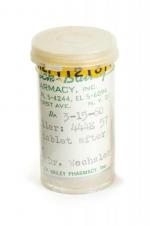
Lot 44: MARILYN MONROE GIFTED MONEY CLIP
A sterling silver money clip, engraved "To Harry" with the engraved signature in Monroe's hand "Love and Kisses/ Marilyn Monroe." The clip is stamped "Sterling CJS" to the reverse. 'Harry' is Harry Roberts, a soundman at 20th Century Fox. Originally, consigned by Harry Hooten, the grandson of Harry Roberts.
1 by 2 1/2 inches
Estimate: $3,000 - $5,000

Lot 62: MARILYN MONROE 34TH BIRTHDAY PARTY DOLL
A small plastic doll created in the likeness of Marilyn Monroe and distributed to guests at a party for Monroe's 34th birthday on the set of Let's Make Love (20th Century, 1960) in 1960.
Height, approximately. 3 inches
Estimate: $1,000 - $2,000
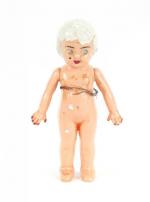
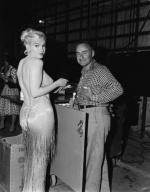
Lot 68: MARILYN MONROE SOUVENIR
A set of keys with a brass metal tag, originally sold as a novelty souvenir. The tag reads “M. Monroe, Dressing Room 5.”
6 ½ by 2 inches
Estimate: $250 - $500
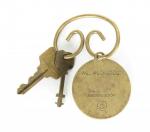
Lot 95: MARILYN MONROE VINTAGE WOOD SKI
A single wood ski with metal binding, with a label marked "Made in Czechoslovakia," and another marked "White Mountain Ski Shop New York."
Length, 65 1/2 inches
Estimate: $600 - $800
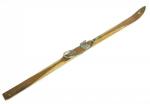

Lot 210: MARILYN MONROE CAMERA
A Minolta-16 subminiature 16mm camera in a brown leather case, with matching wrist strap, together with original blue box and instruction book. The Minolta model 16 was first introduced in 1957.
Camera, 1 5/8 by 3 1/8 inches
Estimate: $4,000 - $6,000

Lot 216: MARILYN MONROE JOE DiMAGGIO ELECTRIC RAZORS
Two Norelco electric Speed shavers with zipper closure Norelco case; top leather covering has become separated from the cardboard box lid. Together with power cord, one plastic shaver cap, three cleaning brushes, two loose shaver sharpeners, one sharpener in original unopened plastic bag with instruction paper and one loose sheet of sharpener instructions.
Shaver, 3 1/2 by 4 inches
Estimate: $200 - $300
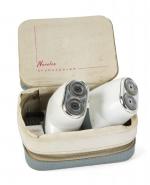
Lot 246: MARILYN MONROE VINTAGE MINI PINECONE TREE GIFTED FROM JOE DIMAGGIO TO MARILYN MONROE
A mini brown wire form holiday tree made of pinecones and other tree items, dusted with glitter. Wrapped in a black tulle base. The tree was purportedly a gift from Joe DiMaggio to Marilyn Monroe one Christmas when he discovered that she did not have a tree to celebrate the holidays.
Height, 23 inches
Estimate: $2,000 - $3,000

Lot 274: MARILYN MONROE TYPEWRITER
A Royal Quiet De Luxe model typewriter in grey with tweed style hard carrying case. Partial sticker on side reads "San Leandro Co. Sales, Repairs 614 E. 14th Street."
13 1/2 by 7 by 14 inches
Estimate: $800 - $1,200
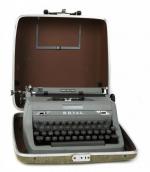
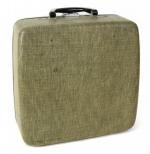
Lot 277: MARILYN MONROE VANITY CASE
A tan leather suitcase by Mark Cross, England with hinged front panel that opens to access vanity compartment containing two tone blue vanity set including hand mirror, two empty glass bottles, glass powder container, glass jar containing hairpins, glass jar containing soap powder, hairbrush, garment brush, long glass tube bottle, small leather box containing triangular tube of lipstick, nail file, and hair comb. The top of case has custom stamped "A.L." Mark Cross is considered among the first American luxury brands that expanded its operations overseas with a store in London. It is perhaps most famous for the overnight bag it designed for Grace Kelly to use in Rear Window.
14 by 20 3/4 by 7 inches
Estimate: $1,500 - $2,500

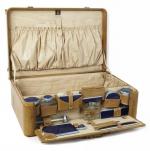

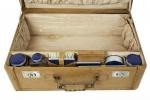

Lot 281: VINTAGE MARILYN MONROE SUITCASE
A fabric lined luggage case with leather edging and metal hardware.
With a label reading "Royal Gascogne Bordeaux/ Garage dans L'Hotel."
8 by 25 1/4 by 14 1/2 inches
Estimate: $800 - $1,200


Lot 348: MARILYN MONROE CHINESE STERLING FAN SHAPED PILLBOX
A pillbox, the lid with a figure of a dancer, a fan with Chinese characters, and a hand. Marked "Sterling" and "Made in {...}," (partly effaced but believed to read "China"). Weight, .84 troy oz.
3/4 by 2 1/4 by 1 1/4 inches
Estimate: $800 - $1,200
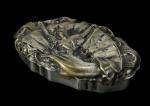
Lot 349: MARILYN MONROE VINTAGE BRASS PILLBOX
Marked "M.R. Morais," the top inset with a 500 reis coin reading "7 de Setembro 1 Centenario da Independencia 1822-1922"
Diameter, 1 1/2 inches
Estimate: $600 - $800

Lot 63: MARILYN MONROE GIFTED BOX
A rectangular silver tone presentation cigarette box gifted from Marilyn Monroe to Frankie Vaughan. The interior of the lid is in engraved Monroe's handwriting “Dear Frankie, It was really wonderful working with you. Best always, Marilyn.“ The box was gifted to Vaughan by Monroe at the end of filming Let's Make Love (20th Century, 1960).
Approximately 9 ½ by 4 by 1 ½ inches
PROVENANCE: Lot 132, "Film and Entertainment,” Christie's, London, Sale number 5515, December 14, 2004
Estimate: $4,000 - $6,000
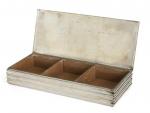
Lot 452: MARILYN MONROE MINAUDIERE
A ladies evening minaudiere with original box reading "Pandora by Wadsworth." The small evening compact features three compartments. When opened, the center features a loose powder compartment and original cotton buffer with mirror. The top compartment features a lipstick holder, with a tube of lipstick, a clear plastic comb and two loose Mercury dimes dated 1943 and 1945. The lower compartment contains eight Philip Morris cigarettes. Each end of the gold metal case is embellished with a citrine crystal floret. The compact is accompanied by a black velvet and white silk carrying case terminating in a black tassel. The case features a gold metal ring that closes down below the wrist to hold the case in place.
Case, 4 1/4 inches
Estimate: $20,000 - $30,000

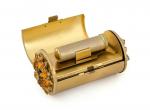
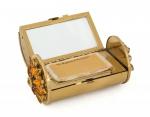
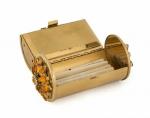






Lot 143: MARILYN MONROE MARGIT TEVAN BRONZE CIGARETTE BOX
A bronze lidded box with figural Old Testament scenes on the lid and partition inside. Marked "Hungarian Handmade" on the bottom.
1 by 5 by 5 1/2 inches
Estimate: $1,000 - $2,000

Lot 847: MARILYN MONROE CIGARETTE CASE GIVEN TO JOE DiMAGGIO
A sterling silver cigarette case given by Marilyn Monroe to Joe DiMaggio. The front of the case is engraved “Memory of Japan” with a landscape scene. The back of the case is engraved “Joe” at the center and “Love Marilyn” at lower right.
3 1/4 by 7 inches
Estimate: $10,000 - $20,000



Lot 214: MARILYN MONROE JOE DiMAGGIO ACCESSORY CASE
A burgundy alligator jewelry case with hinged lid, removable tan suede divided tray that fits into a partitioned interior with matching leather pad. The lid to the case features gold metal letters reading "J Dim" and a front three-digit combination lock closure with "555" code, a repetition of DiMaggio's Yankee number, 5.
20 1/2 by 11 1/2 by 3 inches
Estimate: $3,000 - $5,000
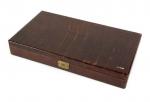
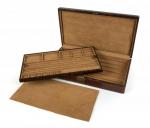

Lot 951: MARILYN MONROE UNEDITED AUDIO RECORDING OF "RUNNING WILD" AND "I WANT TO BE LOVED BY YOU"
An unedited audio recording of Marilyn Monroe performing multiple takes of the song “Running Wild” and “I Want to be Loved by You.” Both of these songs are performed in the film Some Like It Hot (UA, 1959). Recorded on a reel of 1/4-inch magnetic acetate tape housed in a Maestro reel box. The reel comes from the estate of Myrton Blackler who owned and operated Studio 7612, a recording studio in Hollywood. In the late 1950s and early 1960s, Blackler was hired by MGM for recording sessions, including Monroe’s. On the approximately 30-minute recording, an unknown person can be heard giving Monroe direction in the background. The tape includes a CD copy of the recording.
Reel diameter, 7 inches
Estimate: $10,000 - $20,000
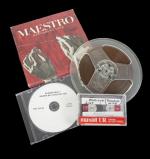
Enregistrer
Enregistrer
Enregistrer
Enregistrer
Enregistrer
Enregistrer
Enregistrer
Enregistrer
Enregistrer
Enregistrer
Enregistrer
Enregistrer
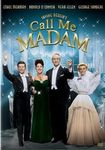 Le 4 mars 1953, Marilyn Monroe se rend à la première du film Call Me Madam, un film de comédie musicale adapté à l'écran par Walter Lang avec Ethel Merman, Donal O'Connor et Helmut Dantine et dont les chansons sont signées Irving Berlin. Marilyn retrouvera d'ailleurs Donald O'Connor et Etherl Merman l'année suivante, puisqu'ils seront ses partenaires dans le film There's no business like show business. Pour cette première très médiatisée, les photographes et journalistes de la presse écrite et télé ont fait le déplacement et Marilyn se fait ici interviewer pour la première fois pour la télévision par Ken Murray. Joe DiMaggio rejoint Marilyn dans les coulisses.
Le 4 mars 1953, Marilyn Monroe se rend à la première du film Call Me Madam, un film de comédie musicale adapté à l'écran par Walter Lang avec Ethel Merman, Donal O'Connor et Helmut Dantine et dont les chansons sont signées Irving Berlin. Marilyn retrouvera d'ailleurs Donald O'Connor et Etherl Merman l'année suivante, puisqu'ils seront ses partenaires dans le film There's no business like show business. Pour cette première très médiatisée, les photographes et journalistes de la presse écrite et télé ont fait le déplacement et Marilyn se fait ici interviewer pour la première fois pour la télévision par Ken Murray. Joe DiMaggio rejoint Marilyn dans les coulisses.
/image%2F1211268%2F20240504%2Fob_d6bf56_banner-mm-2024-05-spring-summer-1.jpg)
/image%2F1211268%2F20240410%2Fob_40c4f9_blog-gif-mm-niagara-1-3.gif)
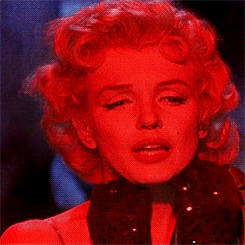
/image%2F1211268%2F20240417%2Fob_0b0d56_2024-03-lee-mexique.jpg)
/https%3A%2F%2Fstorage.canalblog.com%2F19%2F65%2F312561%2F91436129_o.jpg)
/https%3A%2F%2Fstorage.canalblog.com%2F57%2F63%2F312561%2F127743382_o.jpg)
/https%3A%2F%2Fstorage.canalblog.com%2F98%2F05%2F312561%2F84823731_o.jpg)
/https%3A%2F%2Fstorage.canalblog.com%2F01%2F63%2F312561%2F84814201_o.jpg)
/https%3A%2F%2Fstorage.canalblog.com%2F66%2F21%2F312561%2F82823948_o.jpg)
/https%3A%2F%2Fstorage.canalblog.com%2F32%2F31%2F312561%2F124125043_o.jpg)
/https%3A%2F%2Fstorage.canalblog.com%2F31%2F08%2F312561%2F71448014_o.jpg)
/https%3A%2F%2Fstorage.canalblog.com%2F34%2F90%2F312561%2F81829009_o.jpg)
/https%3A%2F%2Fstorage.canalblog.com%2F18%2F35%2F312561%2F61120383_o.jpg)
/image%2F1211268%2F20240410%2Fob_9f471d_blog-gif-mm-syi-1.gif)
